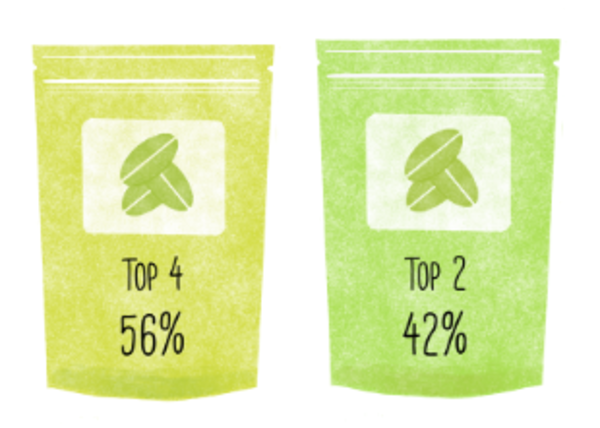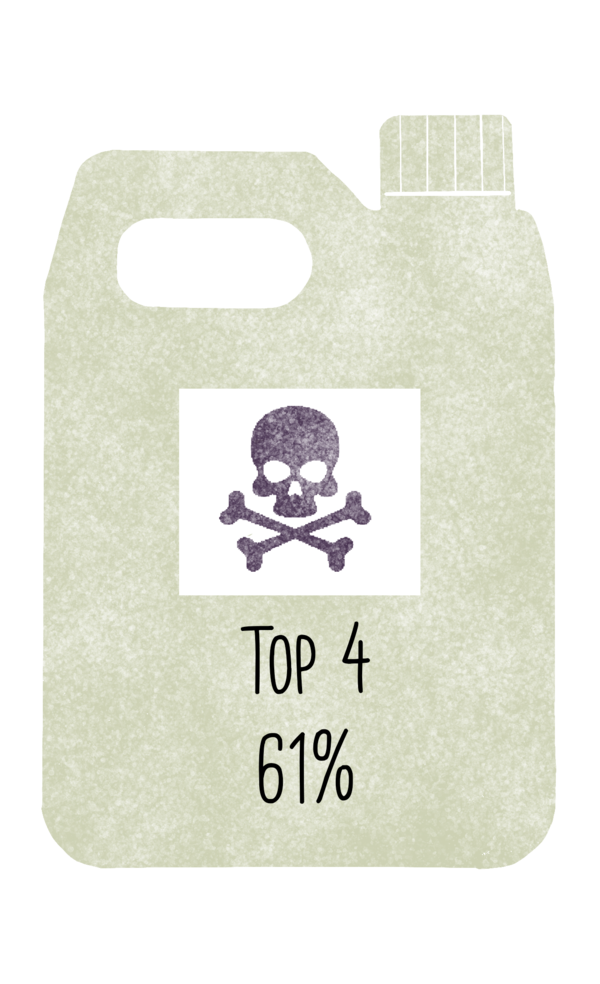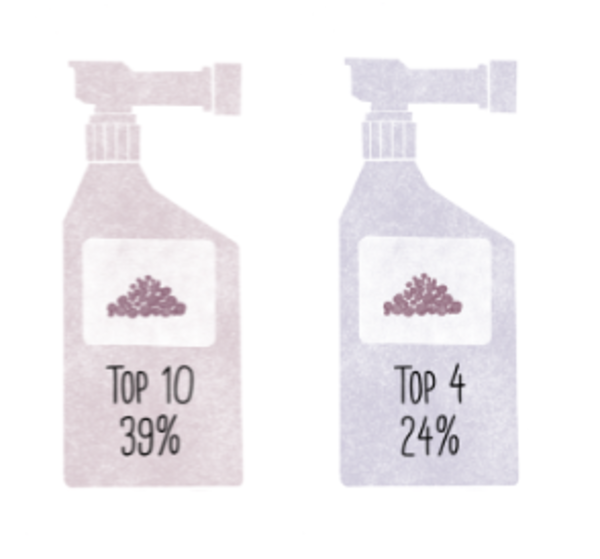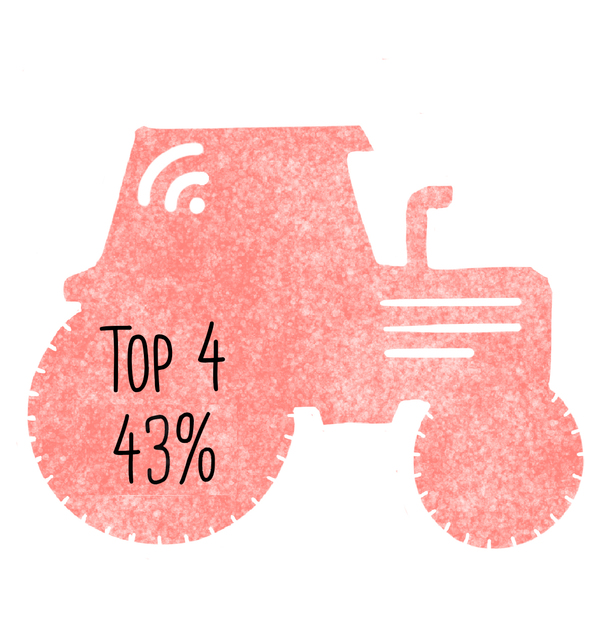SPECIAL REPORTS AND PROJECTS
Manipulating Social Media to Undermine Democracy
Published
8 years agoon
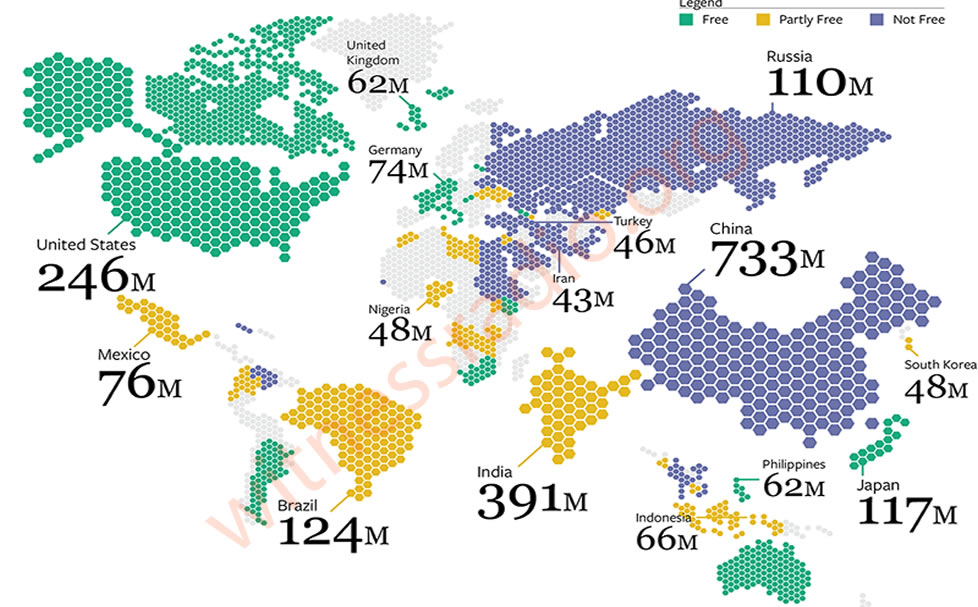
Key Findings
- Online manipulation and disinformation tactics played an important role in elections in at least 18 countries over the past year, including the United States.
- Disinformation tactics contributed to a seventh consecutive year of overall decline in internet freedom, as did a rise in disruptions to mobile internet service and increases in physical and technical attacks on human rights defenders and independent media.
- A record number of governments have restricted mobile internet service for political or security reasons, often in areas populated by ethnic or religious minorities.
- For the third consecutive year, China was the world’s worst abuser of internet freedom, followed by Syria and Ethiopia.
Governments around the world have dramatically increased their efforts to manipulate information on social media over the past year. The Chinese and Russianregimes pioneered the use of surreptitious methods to distort online discussions and suppress dissent more than a decade ago, but the practice has since gone global. Such state-led interventions present a major threat to the notion of the internet as a liberating technology.
Online content manipulation contributed to a seventh consecutive year of overall decline in internet freedom, along with a rise in disruptions to mobile internet service and increases in physical and technical attacks on human rights defenders and independent media.
Nearly half of the 65 countries assessed in Freedom on the Net 2017 experienced declines during the coverage period, while just 13 made gains, most of them minor. Less than one-quarter of users reside in countries where the internet is designated Free, meaning there are no major obstacles to access, onerous restrictions on content, or serious violations of user rights in the form of unchecked surveillance or unjust repercussions for legitimate speech.
The use of “fake news,” automated “bot” accounts, and other manipulation methods gained particular attention in the United States. While the country’s online environment remained generally free, it was troubled by a proliferation of fabricated news articles, divisive partisan vitriol, and aggressive harassment of many journalists, both during and after the presidential election campaign.
Russia’s online efforts to influence the American election have been well documented, but the United States was hardly alone in this respect. Manipulation and disinformation tactics played an important role in elections in at least 17 other countries over the past year, damaging citizens’ ability to choose their leaders based on factual news and authentic debate. Although some governments sought to support their interests and expand their influence abroad—as with Russia’s disinformation campaigns in the United States and Europe—in most cases they used these methods inside their own borders to maintain their hold on power.
Venezuela, the Philippines, and Turkey were among 30 countries where governments were found to employ armies of “opinion shapers” to spread government views, drive particular agendas, and counter government critics on social media. The number of governments attempting to control online discussions in this manner has risen each year since Freedom House began systematically tracking the phenomenon in 2009. But over the last few years, the practice has become significantly more widespread and technically sophisticated, with bots, propaganda producers, and fake news outlets exploiting social media and search algorithms to ensure high visibility and seamless integration with trusted content.
Unlike more direct methods of censorship, such as website blocking or arrests for internet activity, online content manipulation is difficult to detect. It is also more difficult to combat, given its dispersed nature and the sheer number of people and bots employed for this purpose.
The effects of these rapidly spreading techniques on democracy and civic activism are potentially devastating. The fabrication of grassroots support for government policies on social media creates a closed loop in which the regime essentially endorses itself, leaving independent groups and ordinary citizens on the outside. And by bolstering the false perception that most citizens stand with them, authorities are able to justify crackdowns on the political opposition and advance antidemocratic changes to laws and institutions without a proper debate. Worryingly, state-sponsored manipulation on social media is often coupled with broader restrictions on the news media that prevent access to objective reporting and render societies more susceptible to disinformation.
Successfully countering content manipulation and restoring trust in social media—without undermining internet and media freedom—will take time, resources, and creativity. The first steps in this effort should include public education aimed at teaching citizens how to detect fake or misleading news and commentary. In addition, democratic societies must strengthen regulations to ensure that political advertising is at least as transparent online as it is offline. And tech companies should do their part by reexamining the algorithms behind news curation and more proactively disabling bots and fake accounts that are used for antidemocratic ends.
In the absence of a comprehensive campaign to deal with this threat, manipulation and disinformation techniques could enable modern authoritarian regimes to expand their power and influence while permanently eroding user confidence in online media and the internet as a whole.

Other key trends
Freedom on the Net 2017 identified five other trends that significantly contributed to the global decline in internet freedom over the past year:
State censors target mobile connectivity. An increasing number of governments have shut down mobile internet service for political or security reasons. Half of all internet shutdowns in the past year were specific to mobile connectivity, with most others affecting mobile and fixed-line service simultaneously. Many of the mobile shutdowns occurred in areas populated by minority ethnic or religious groups that have challenged the authority of the central government or sought greater rights, such as Tibetan areas in China and Oromo areas in Ethiopia. The actions cut off internet access for already marginalized people who depend on it for communication, commerce, and education.
More governments restrict live video. As live video streaming gained popularity over the last two years with the emergence of platforms like Facebook Live and Snapchat’s Live Stories, some governments have attempted to restrict it, particularly during political protests, by blocking live-streaming applications and arresting people who are trying to broadcast abuse. Considering that citizen journalists most often stream political protests on their mobile phones, governments in countries like Belarus have at times disrupted mobile connectivity specifically to prevent live-streamed images from reaching mass audiences. Officials often justified their restrictions by noting that live streaming can be misused to broadcast nudity or violence, but blanket bans on these tools prevent citizens from using them for any purpose.
Technical attacks against news outlets, opposition, and rights defenders on the rise. Cyberattacks became more common due in part to the increased availability of relevant technology, which is sold in a weakly regulated market, and in part to inadequate security practices among many of the targeted groups or individuals. The relatively low cost of cyberattack tools has enabled not only central governments, but also local government officials and law enforcement agencies to obtain and employ them against their perceived foes, including those who expose corruption and abuse. Independent blogs and news websites are increasingly being taken down through distributed denial-of-service (DDoS) attacks, activists’ social media accounts are being disabled or hijacked, and opposition politicians and human rights defenders are being subjected to surveillance through the illegal hacking of their phones and computers. In many cases, such as in Bahrain, Azerbaijan, Mexico, and China, independent forensic analysts have concluded that the government was behind these attacks.
New restrictions on virtual private networks (VPNs). Although VPNs are used for diverse functions—including by companies to enable employees to access corporate files remotely and securely—they are often employed in authoritarian countries as a means of bypassing internet censorship and accessing websites that are otherwise blocked. This has made VPNs a target for government censors, with 14 countries now restricting the connections in some form and with six countries introducing new restrictions over the past year. The Chinese government, for example, issued regulations that required registration of “approved VPNs,” which are presumably more compliant with government requests, and has moved to block some of the unregistered services.
Physical attacks against netizens and online journalists expand dramatically. The number of countries that featured physical reprisals for online speech increased by 50 percent over the past year—from 20 to 30 of the countries assessed. Online journalists and bloggers who wrote on sensitive topics and individuals who criticized or mocked prevailing religious beliefs were the most frequent targets. In eight countries, people were murdered for their online expression. In Jordan, for example, a Christian cartoonist was shot dead after publishing an online cartoon that lampooned Islamist militants’ vision of heaven, while in Myanmar, an investigative journalist was murdered after posting notes on Facebook that alleged corruption.
Several of the practices described above are clearly outside the bounds of the law, signaling a departure from the trend observed in previous years, when governments rushed to pass new laws that regulated internet activity and codified censorship tactics. For instance, spreading fake news and smearing individuals’ public image are often criminal offenses in countries where the government employs those tactics against its critics. Similarly, in a number of countries where the government is apparently behind cyberattacks affecting the human rights community, newly passed cybersecurity laws actually prohibit such activity. Even in cases of mobile shutdowns, most countries do not have specific laws authorizing the disruptions. It appears that in many countries, the internet regulations imposed in recent years apply only to civilians in practice, and government officials are able to disregard them with impunity.

Internet Freedom vs. Internet Penetration vs. GDP

Tracking the global decline
Freedom on the Net is a comprehensive study of internet freedom in 65 countries around the globe, covering 87 percent of the world’s internet users. It tracks improvements and declines in government policies and practices each year. The countries included in the study are selected to represent diverse geographical regions and regime types. This report, the seventh in its series, focuses on developments that occurred between June 2016 and May 2017, although some more recent events are included in individual country narratives. More than 70 researchers, nearly all based in the countries they analyze, contributed to the project by examining laws and practices relevant to the internet, testing the accessibility of select websites and services, and interviewing a wide range of sources.
Of the 65 countries assessed, 32 have been on an overall decline since June 2016. The biggest declines took place in Ukraine, Egypt, and Turkey. In Ukraine, the government blocked major Russian-owned platforms, including the country’s most widely used social network (VKontakte) and search engine (Yandex), on national security grounds. Meanwhile, violent reprisals for online activity escalated in the country, with one prominent online journalist killed in a car bombing. In Egypt, the authorities blocked over 100 websites, including that of the Qatar-based news network Al-Jazeera, the independent news site Mada Masr, and the blogging platform Medium. Social media users received lengthy prison sentences for a range of alleged offenses, including insulting the country’s president. And in Turkey, thousands of smartphone owners were arrested simply for having downloaded the encrypted communication app ByLock, which was available publicly through Apple and Google app stores, amid allegations that the app was used by those involved in the failed July 2016 coup attempt.
China was the worst abuser of internet freedom for the third consecutive year. The Chinese government’s crackdown intensified in advance of the Communist Party’s 19th National Congress in October 2017, which ushered in Xi Jinping’s second five-year term as general secretary. The year’s restrictions included official orders to delete all online references to a newly discovered species of beetle named after Xi, which the censors reportedly found offensive given the beetle’s predatory nature. Meanwhile, the authorities further eroded user privacy through a new cybersecurity law that strengthened internet companies’ obligation to register users under their real names and assist security agencies with investigations. Domestic companies are implementing the measures as part of a gradual move toward a unified “social credit” system—assigning people numerical scores based on their internet usage patterns, much like a financial credit score—that could ultimately make access to government and financial services dependent on one’s online behavior. The cybersecurity law also requires foreign companies to store data on Chinese users within China by 2018, and many—including Uber, Evernote, LinkedIn, Apple, and AirBnb—have started to comply.
Government critics received sentences of up to 11 years in prison for publishing articles on overseas websites. While such penalties are documented year after year, the July 2017 death of democracy advocate Liu Xiaobo from liver cancer while in custody was a stark reminder of the immense personal toll they may take on those incarcerated. Liu, a Nobel Peace Prize winner, had been in prison since a prodemocracy manifesto he coauthored was circulated online in 2009. News of his passing sparked a new wave of support—and censorship.

The internet freedom status of Venezuela and Armenia was downgraded. Venezuela went from Partly Free to Not Free amid a broader crackdown on political rights and civil liberties following President Nicolás Maduro’s May 2016 declaration of a “state of exception and economic emergency,” which was renewed in May 2017. The government blocked a handful of sites that provided live coverage of antigovernment protests, claiming the sites were “instigating war.” Armed gangs physically attacked citizen and online journalists who tried to document antigovernment protests, while the political opposition and independent outlets experienced an unprecedented wave of cyberattacks, effectively taking their sites offline for periods of time and disabling their accounts. In Armenia, which dropped from Free to Partly Free, the police attacked and obstructed journalists and netizens who were trying to live stream antigovernment protests. Thousands of people demonstrated in response to the police’s mishandling of a hostage situation, during which officials temporarily restricted access to Facebook.
The United States also experienced an internet freedom decline. While the online environment in the United States remained vibrant and diverse, the prevalence of disinformation and hyperpartisan content had a significant impact. Proliferation of “fake news”—particularly on social media—peaked in the run-up to the November 2016 presidential election, but it continues to be a concern. Journalists who challenge Donald Trump’s positions have faced egregious online harassment.
Among other noteworthy developments, after Trump assumed office as president in January 2017, U.S. Customs and Border Protection agents in March asked Twitter to reveal the owner of an account that objected to Trump’s immigration policy, and backed off only after the company fought the request in court. Even more worrying was a government request in July 2017 to compel internet hosting company DreamHost to hand over all the internet protocol addresses of users who visited disruptj20.org, a website that helped coordinate Trump inauguration protests; this request was narrowed only after a legal challenge from DreamHost. Meanwhile, the new chairman of the Federal Communications Commission announced a plan in April to roll back net neutrality protections adopted in 2015.
Only 13 countries earned an improvement in their internet freedom score. In most cases, the gains were limited and did not reflect a broad shift in policy. In Libya, for example, several news websites were unblocked, and unlike in previous years, no users were imprisoned for their online activity. In Bangladesh, there was no repetition of the government’s temporary 2015 blocking of popular apps like Facebook, WhatsApp, and Viber amid security concerns following the confirmation of death sentences against two Islamist leaders. And Uzbekistan, one of the most restrictive states assessed, improved slightly after the introduction of a new e-government platform designed to channel public grievances, which prompted greater citizen engagement.
Freedom on the Net 2017 Overall Scores
Scores: 0 = Most Free, 100 = Least Free
Major Developments
Bots and fake news add a new sophistication to manipulation online
Repressive regimes have long sought to control the flow of information within their territories, a task rendered more difficult by the advent of the internet. When punitive laws, online censorship, and other restrictive tactics prove inadequate and comprehensive crackdowns are untenable, more governments are mass producing their own content to distort the digital landscape in their favor. Freedom House first tracked the use of paid progovernment commentators in 2009, but more governments are now employing an array of sophisticated manipulation tactics, which often serve to reinforce one another. Authoritarians have effectively taken up the same tools that many grassroots democratic activists used to disrupt the state media narrative, and repurposed them to advance an antidemocratic agenda.
The Russian government’s attempted use of bots and fake news to sway elections in the United States and Western Europe has brought new attention to the issue of content manipulation. But in many countries, these tactics are used not by foreign powers, but by incumbent governments and political parties seeking to perpetuate their rule.
Progovernment commentators feign grassroots support
Progovernment commentators were found in 30 of the 65 countries surveyed in this study, up from 23 in the 2016 edition and a new high. In these countries, there are credible reports that the government employs staff or pays contractors to manipulate online discussions without making the sponsored nature of the content explicit. The evidence has been collected largely through investigative reporting, leaked government documents, and academic research. The manipulation has three principal aims: (1) feigning grassroots support for the government (also known as “astroturfing”), (2) smearing government opponents, and (3) moving online conversations away from controversial topics. The progovernment commentators tasked with achieving these goals come in many forms.
In the most repressive countries, members of the government bureaucracy or security forces are directly employed to manipulate political conversations. For example, Sudan ’s so-called cyber jihadists—a unit within the National Intelligence and Security Service—created fake accounts to infiltrate popular groups on Facebook and WhatsApp, fabricate support for government policies, and denounce critical journalists. A government propagandist in Vietnam has also acknowledged operating a team of hundreds of “public opinion shapers” to monitor and direct online discussions on everything from foreign policy to land rights.
In other cases, online manipulation is outsourced to the ruling party apparatus, political consultancies, and public relations firms. Investigative reporting has exposed the role of the Internet Research Agency, a Russian “troll farm” reportedly financed by a businessman with close ties to President Vladimir Putin. In the Philippines, news reports citing former members of a “keyboard army” said they could earn $10 per day operating fake social media accounts that supported Rodrigo Duterte or attacked his detractors in the run-up to his May 2016 election as president; many have remained active under his administration, amplifying the impression of widespread support for his brutal crackdown on the drug trade. In Turkey, numerous reports have referred to an organization of “AK Troller,” or “White Trolls,” named after the ruling Justice and Development Party, whose Turkish acronym AK also means “white” or “clean.” Some 6,000 people have allegedly been enlisted by the party to manipulate discussions, drive particular agendas, and counter government opponents on social media. Journalists and scholars who are critical of the government have faced orchestrated harassment on Twitter, often by dozens or even hundreds of users.
Over the years, governments have found new methods of crowdsourcing manipulation to achieve a greater impact and avoid direct responsibility. As a result, it can be hard to distinguish propaganda from actual grassroots nationalism, even for seasoned observers. For example, the government in China has long enlisted state employees to shape online discussions, but they are now just a small component of a larger ecosystem that incorporates volunteers from the ruling party’s youth apparatus as well as ordinary citizens known as “ziganwu.” In official documents, the Communist Youth League described “online civilization volunteers” as people using “keyboards as weapons” to “defend the online homeland” in the ongoing “internet war.”
In at least eight countries, politicians encourage or even incentivize followers to report “unpatriotic content,” harass “enemies of the state,” or flood social media with comments hailing government policies—often working hand-in-hand with paid commentators and propagandists. A senior police official in Thailand invited citizens to serve as the eyes and ears of the state after the 2014 military coup, awarding $15 to those who report users for opposing the military government. Separately, over 100,000 students have been trained as “cyber scouts” to monitor and report online behavior deemed to threaten national security, while supporters of the regime wage witch hunts on Facebook, identifying and reporting other users who break strict laws against criticizing the monarchy. In Ecuador, then president Rafael Correa launched a website that sent supporters a notification whenever a social media user criticized the government, allowing progovernment commentators to collectively target political dissidents.
Bots drown out activists with nonsense and hate speech
In addition to human commentators, both state and nonstate actors are increasingly creating automated accounts on social media to manipulate online discussions. In at least 20 countries, characteristic patterns of online activity suggested the coordinated use of such “bots” to influence political discourse. Thousands of fake names and profiles can be deployed with the click of a mouse, algorithmically programmed to focus on certain critical voices or keywords. They are capable of drowning out dissent and disrupting attempts to mobilize collective action online.
According to estimates by cloud services provider Imperva Incapsula, bots made up 51.2 percent of all web traffic in 2016. Many of them conduct automated tasks for commercial purposes. For example, bots now play a vital role in monitoring the health of websites, ordering products online, and pushing new content from desktop websites to mobile apps. These “good bots” are identifiable and operated by many of the largest technology companies, including Amazon, Facebook, Google, and Microsoft. Malicious bots, however, are unidentifiable by design and have made up the majority of bot activity since 2013. They can be used for hacking, spamming, stealing content, and impersonating humans in public discussions.
Studies have demonstrated the difficulty of detecting bots through any single criterion. On Twitter, bot accounts characteristically tweet frequently, retweet one another, and disseminate links to external content more often than human-operated accounts. Bots are also used in a transnational industry of artificial “likes” and followers. For example, a review of President Donald Trump’s Twitter followers by Newsweek in May determined that only 51 percent of his 30 million followers were real.
In some cases, malicious bots have been deployed in governments’ information wars against foreign adversaries and domestic opponents.
In Mexico, an estimated 75,000 automated accounts known colloquially as Peñabots have been employed to overwhelm political opposition on Twitter. When a new hashtag emerges to raise awareness about a protest or corruption scandal, government backers employ two methods to game the system in favor of President Enrique Peña Nieto. In one method, the bots promote alternative hashtags that push the originals off the top-10 list. In another method known as “hashtag poisoning,” the bots flood the antigovernment hashtags with irrelevant posts in order to bury any useful information. Hashtag poisoning can have real-world consequences: Unable to access maps of police activity and safe exit routes, many peaceful protesters in Mexico were unable to flee danger zones and instead faced excessive force by the police.
Bots can also be used to smear regime opponents and promote sectarianism. In Bahrain, for example, where much of the Shiite majority has demanded political reform from the repressive Sunni monarchy, a researcher found that just over half of all tweets on the hashtag #Bahrain in a given time period consisted of anti-Shiite hate speech. Tweets featuring nearly identical language accused a prominent Shiite cleric of inciting violence against state security forces. This bot army has been mobilized in online conversations about Saudi Arabia, Yemen, and Iran, always denigrating Shiite Muslims.
Hijacked accounts spread disinformation
In at least nine countries, hackers with suspected links to the government or ruling party hijacked social media accounts and news sites in order to spread disinformation. In the Middle East, the alleged hacking of a Qatari state news site to post pro-Iranian statements attributed to high-level Qatari officials sparked an international incident. Although Qatar denied the veracity of the stories, a regional coalition led bySaudi Arabia responded with a blockade that included the obstruction of dozens of Qatari-linked news sites. Amid the hysteria, authorities in Egypt also blocked the websites of dozens of independent news outlets and human rights organizations.
While Qatar’s hacking allegations have yet to be independently confirmed, it would not be an isolated case. On the eve of Belarus’s “Freedom Day” demonstration, an opposition leader and protest organizer’s Facebook account was hacked in order to post fake comments discouraging people from attending the event. In Turkey, hackers have taken over the accounts of prominent journalists and activists so as to publish fake apologies in which the victims express regret for criticizing the government. Access Now reported that in Venezuela, Myanmar, and Bahrain, hackers spread disinformation through “DoubleSwitch” attacks. After gaining access to a verified account, changing the recovery email address, and altering the account handle, the hackers created a new account under the victim’s name and original handle, then disseminated content from both accounts.
These incidents underline the role of poor cybersecurity in online manipulation. Many hackers exploit weaknesses in SMS-based two-factor authentication for social media accounts, particularly if the victim resides in a country where state-sponsored hackers may collude with state-run telecommunications companies. International tech firms have made improvements in monitoring for state-sponsored attacks, although the repeated theft or leaking of customers’ personal data by cybercriminals can provide progovernment hackers with much of the confidential material they need to clear even the strongest identification hurdles.

Fake news proliferates in a new media environment
The “democratization” of content production and the centralization of online distribution channels like Twitter and Facebook has shaken up the media industry, and one unintended consequence has been the proliferation of fake news—intentionally false information that has been engineered to resemble legitimate news and garner maximum attention. Fake news has existed since the dawn of the printing press. However, its purveyors have recently developed sophisticated ways—such as gaming the algorithms of social media and search engines—to reach large audiences and mislead news consumers.
Social media are increasingly used as a primary source of news and information, but users’ inability to distinguish between genuine news and lucrative or politically motivated frauds seriously reduces their value and utility. Although there is little information publicly available regarding the algorithms of Facebook, Google, Twitter, and other information gatekeepers, they have tended to promote viral or provocative articles that generate clicks, regardless of the veracity of their content. Just as upstart media organizations like BuzzFeed tailored the titles of real articles to suit Facebook’s NewsFeed, enterprising Macedonian teenagers crafted click-bait headlines for fake articles in advance of the November 2016 U.S. elections, profiting immensely from Google Ads placed on their sites. Such illegitimate news content appeared on social media platforms alongside articles from legitimate outlets, with no obvious distinction between the two.
Freedom House documented prominent examples of fake news around elections or referendums in at least 16 of the 65 countries assessed. Government agents in Venezuela regularly used manipulated footage to disseminate lies about opposition protesters on social media, creating confusion and undermining the credibility of the opposition movement ahead of elections. In Kenya, users readily shared fake news articles and videos bearing the logos of generally trusted outlets such as CNN, the BBC, and NTV Kenya on social media and messaging apps in advance of the August 2017 election.
While fake news sites are not new, they are being used with increasing sophistication for political purposes. Progovernment actors in Iran have long created sites like persianbbc.ir to mimic the look of the authentic bbcpersian.com, filling them with conspiracy theories and anti-Western propaganda. More recently, Iranian hacker groups have established websites with names like BritishNews and AssadCrimes as part of more elaborate social-engineering schemes. The latter contained articles lifted from a Syrian opposition blog and was falsely registered under the name of a prominent opposition activist. Hackers created email addresses and social media profiles linking to the fake publications in order to communicate with government opponents and human rights defenders and map out their social networks. Once trust was established, the hackers targeted victims with so-called remote access trojan (RAT) programs and gained access to their devices.
Progovernment news and propaganda
The line between real news and propaganda is often difficult to discern, particularly in hyperpartisan environments where each side accuses the other of distorting facts. Societies with strong respect for media freedom and free speech allow citizens to consult a diverse range of news sources and develop an informed understanding of events. However, in over half of the countries included in the report, the online media landscape is warped by frequent bribes, politicized editorial directives, or ownership takeovers by government-affiliated entities and individuals—all of which Freedom House has observed for many years in such countries’ print and broadcast sectors. The result is often an environment in which all major news outlets toe the government line.
In Azerbaijan, media pluralism has been undermined by restrictions on foreign funding that leave media outlets dependent on the state-controlled domestic advertising market. In Hungary, <turkey< strong=””>, and Russia, the government or oligarchs with strong links to the ruling party have purchased numerous online outlets, dismissed critical journalists, and quickly altered the sites’ editorial stance.
Some of the most prominent purveyors of state propaganda are governments that claim to be combating disinformation. In Cuba, where laws criminalize the dissemination of “enemy propaganda” and “unauthorized news,” online media have long been dominated by state-run outlets and progovernment bloggers who defend the actions of the leadership and its foreign allies. The constitution prohibits private ownership of media outlets and allows freedom of speech and freedom of the press only if they “conform to the aims of a socialist society.”
But in few places was the hypocritical link between state propaganda and legal restrictions on the media stronger than in Russia. Bloggers who obtain more than 3,000 daily visitors must register their personal details with the Russian government and abide by the law regulating mass media. Search engines and news aggregators were banned from including stories from unregistered outlets under a new law that took effect in January 2017. Foreign social media platforms have been pressured to move their servers within the country’s borders to facilitate state control, while key local platforms have been purchased by Kremlin allies.

Diverse responses to manipulation
In a troubling trend, governments in at least 14 countries actually restricted internet freedom in a bid to address various forms of content manipulation. In Ukraine, one of the first countries to experience Russia’s modern information warfare, Russian agents have operated fake Ukrainian news sites and flooded social media with invented reports on Crimea’s desire to be part of Russia, Ukrainian citizens’ rejection of the European Union, and other stories that promote the Kremlin’s narrative. In response, Ukrainian authorities have blocked a number of Russia-based social media platforms and search engines, joining a list of countries including China and Iran that have ordered extended bans on prominent social media services. The affected sites—Odnoklassniki, VKontakte, Yandex, and Mail.ru—were widely used by Ukrainians.
Several democratic countries are debating the appropriate response to the fake news phenomenon and, more broadly, the responsibility of intermediaries such as Google, Facebook, and Twitter to remove fraudulent or illegal content. Germany’s Social Media Enforcement Law, passed in June 2017, obliges companies to take down content that is flagged as illegal in a process that lacks judicial oversight. The law is deeply problematic and may create incentives for social media companies to preemptively delete any controversial content, including legitimate speech, in order to avoid fines of up to €50 million. With similar moves proposed in Italy and the Philippines, the German law may set an unfortunate example for both democratic and repressive governments on how to use legal pressure to ensure that companies comply with local demands for censorship.
More broadly, it will take considerable time, resources, and creativity to successfully combat content manipulation and restore trust in social media in a manner that does not undermine internet and media freedom. Already, increased public awareness has resulted in pressure on internet companies to redouble their efforts to remove automated accounts and flag fake or misleading news posts. Some 30,000 fake accounts were removed from Facebook ahead of the 2017 French elections, while Google altered its search rankings to promote trusted news outlets over dubious ones. Twitter also announced that it will do more to detect and suspend accounts used for the primary purpose of manipulating trending topics.
But social media platforms and search engines are only part of the puzzle. Organizations such as First Draft News and Bellingcat provide professional and citizen journalists alike with the tools needed to verify user-generated content, monitor manipulation campaigns, and debunk fake news. More must be done to provide local, tailored solutions to the problem of manipulation in different countries. This is particularly the case in settings where many people get their news from messaging platforms like WhatsApp and Telegram, which makes false information even more difficult to detect.
State censors target mobile connectivity
Network shutdowns—defined by Freedom House as intentional restrictions on connectivity for fixed-line internet networks, mobile data networks, or both—have occurred in a growing number of countries in recent years. In the 2017 edition, 19 out of 65 countries tracked by Freedom on the Nethad at least one network shutdown during the coverage period, up from 13 countries in the 2016 edition and 7 countries in the 2015 edition. Over the past year, authorities have often invoked national security and public safety to shut down communication networks, but in reality the pretexts have ranged from armed conflict and social unrest to peaceful protests, elections, and online “rumors” that could supposedly cause internal strife.
Authorities are increasingly targeting mobile service as opposed to fixed-line networks. During this report’s coverage period, mobile-only disruptions were reported in nine out of of 19 countries with reported shutdowns, while incidents in most remaining countries affected mobile and fixed-line networks simultaneously. Shutdowns targeting fixed-line internet only were documented in just two countries, and they were attributed to authorities conducting tests of their ability to impose broader shutdowns in the future.
There are several reasons why governments may be singling out mobile connectivity. For one, mobile internet use has become the predominant mode of internet access around the world, with global traffic from mobile networks surpassing fixed-line internet traffic for the first time in late 2016. In many developing countries, the majority of internet users access the web from their mobile devices due to the increasing affordability of mobile data subscriptions and devices compared with fixed-line subscriptions. In addition, fixed-line and Wi-Fi connections are tied to specific locations or infrastructure, while mobile connections enable users to connect wherever they can get a signal, giving a mobile shutdown greater impact.
Mobile networks are also being targeted due to the ease with which people can use mobile devices to communicate and organize on the move and in real time, a feature that is appealing to peaceful protesters and violent terrorists alike. Targeted mobile shutdowns also leave fixed-line networks accessible for businesses and government institutions, which can help blunt the negative economic impact of the restrictions.
Mobile shutdowns cut off marginalized communities
In a troubling new trend, the authorities in at least 10 countries deliberately disrupted mobile connectivity in specific regions, often targeting persecuted ethnic and religious groups. In China, for example, Tibetan and Uighur communities have faced regular mobile shutdowns for years, most recently in a Tibetan area of Sichuan Province where officials sought to prevent the spread of news about a Tibetan monk’s self-immolation to protest government repression. In Ethiopia, the government shut down mobile networks for nearly two months as part of a state of emergency declared in October 2016 amid large-scale antigovernment demonstrations by the disenfranchised Oromo and Amhara populations.
For many of the communities affected by such localized shutdowns, mobile service is the only affordable or available option for internet connectivity due to underdeveloped fixed-line infrastructure in remote regions. Consequently, the shutdowns can effectively silence a specific community, not only minimizing their ability to call attention to their political and social grievances, but also diminishing their economic development and educational opportunities.
In addition to their growing frequency, the shutdowns initiated over the past year have been longer in duration, with at least three countries— Lebanon, Bahrain, and Pakistan—experiencing regional shutdowns that lasted more than one year. In Lebanon, 160,000 residents of the northeastern border town of Arsal, many of whom are Syrian refugees, have been completely cut off from mobile internet for over two years as a security measure amid frequent clashes between the military and extremist militants. Since June 2016, Bahraini authorities have required telecom companies to disable mobile and fixed-line connections during nightly curfews in the town of Duraz, where supporters of a prominent Shiite cleric were protesting persecution by the Sunni monarchy.

Service disruptions coincide with elections, special events
Mobile shutdowns have also been deployed to stifle opposition groups during contentious elections periods. During Zambia’s August 2016 presidential election, mobile broadband networks were reportedly disrupted for up to 72 hours in opposition-held regions following protests by opposition supporters who accused the electoral commission of fraud. Similarly in the Gambia, networks were shut down on the eve of a presidential election in December 2016, though in a surprise victory for democracy, the tactic failed to secure the reelection of authoritarian incumbent Yahya Jammeh, who had been in power for nearly 22 years.
Some governments restricted mobile communications during large events out of concern that they could be used to harm public security. In the past year, the authorities in at least three cities in the Philippines directed telecom providers to shut down mobile networks during public festivals and parades; Philippine officials had previously restricted mobile connectivity during the pope’s visit in 2015. Though the shutdown directives were all narrow in scope and duration and communicated to the public, the repeated events have helped normalize shutdowns as a legitimate government measure, despite their disproportionate nature and profound effect on freedom of expression.
App restrictions and price increases curb mobile access
Indirect methods of control over mobile connectivity typically receive less attention than network shutdowns, but they can have the same effect of disrupting essential communications. In keeping with a trend highlighted in Freedom on the Net 2016, popular mobile-specific apps were repeatedly singled out for restrictions during the past year. WhatsApp remained the most targeted communication tool, experiencing disruptions in 12 of the 65 countries assessed. In Turkey, for example, the authorities regularly throttled traffic for WhatsApp to render it virtually inaccessible during politically charged events, while officials in Zimbabwe blocked it for several hours during large antigovernment protests.
Artificial regulation of mobile data prices was also used to indirectly restrict access. After WhatsApp was unblocked in Zimbabwe, the government reportedly hiked the cost of mobile data plans by 500 percent to limit further civic organizing. When mobile networks are not shut down altogether in India‘s restive state of Jammu and Kashmir, the authorities often suspend pay-as-you-go mobile data plans, which most acutely affects low-income residents who cannot afford subscriptions.
Governments restrict live video, especially during protests
Internet users faced restrictions or attacks for streaming live video in at least nine countries. Live broadcasting tools and channels were subject to blocking, and several people were detained to halt real-time coverage of antigovernment demonstrations.
Streaming video in real time has become increasingly popular since the launch of a now-defunct mobile app, Meerkat, in early 2015. Many apps have since added live-streaming features, and deliver content to large global networks. The ability to stream live content directly from a mobile device without the need for elaborate equipment or a distribution strategy has made the technology more accessible. Dedicated news outlets and other content producers also continue to stream live content from their own websites, and some are now doing so in conjunction with apps and social media platforms. Often this allows them to bypass regulations specific to traditional broadcasters, and to reach new audiences.
People stream all sorts of things, from cultural events to everyday interactions. But live video is an important tool for documenting state abuse. In Armenia, digital journalist Davit Harutyunyan reported that police officers assaulted him and broke his equipment to stop him from sharing live footage of police attacking other journalists as they covered antigovernment demonstrations. Even in democracies such as the United States, live-streaming tools have become critical to social justice causes. In one case, live video broadcast on social media by the girlfriend of black motorist Philando Castile after he was fatally shot by police in Minnesota in July 2016 helped bring the incident to nationwide prominence.
Journalists have embraced live streaming, and it has developed into an accessible alternative to broadcast television channels, especially in countries whose traditional media outlets do not tell the full story. Before May 2017 elections in Iran, reformist figures who supported President Hassan Rouhani’s quest for a second term used Instagram Live to cover campaign events and nightly programs despite being sidelined by the state broadcaster IRIB, which has a virtual monopoly on traditional broadcast media. In a testament to the success of this strategy, the protocol that allows Instagram users to stream video was briefly blocked, and when it became accessible again, the hard-line candidate Ebrahim Raisi embraced the platform as well.
Government censors have had to adapt to the trend. In Bahrain, the information ministry banned news websites from streaming live video altogether in July 2016. Others, like Iran when it blocked Instagram, used more ad hoc methods to disrupt live streaming when it was already in progress. Venezuelan regulators ordered service providers to block three websites that broadcast live as tens of thousands of protesters marched against President Maduro in April 2017. In June, live coverage of anticorruption protests in Russia was interrupted when the electricity supply to the office of opposition leader Aleksey Navalny was intentionally cut off, leaving his YouTube channel Navalny Live without light and sound.
The public use of smartphones to document events in real time turned ordinary internet users into citizen journalists—and easy targets for law enforcement officials. At least two video bloggers were arrested and a third was fined for broadcasting antigovernment Freedom Day protests in Belarus; local colleagues observed that they lack the institutional support and legal protections of their professional counterparts. Yet a Belarusian animal rights worker was fined in a separate case because a court found that her live video from a rescue shelter violated a law governing mass media broadcasts.
Live streaming has earned notoriety for enabling users to broadcast nudity, drug use, or even violence. Some countries restricted real-time broadcasts to curb obscenity, but the effects extended to journalism and digital activism. Singaporean streaming app Bigo Live was shuttered for a month in Indonesia until it brokered a deal with the government to limit streaming activity that violates Indonesia’s broad bans on obscene or otherwise “negative” content. And in China, police in southern Guangdong Province shut down hundreds of live-streaming channels during a purge of pornography and other illegal content—a category that includes banned news and commentary.
Cyberattacks hit news outlets, opposition, and rights defenders
A wave of extraordinary cyberattacks caused significant disruptions and data breaches over the past year. Millions of unsecured “internet of things” devices like online baby monitors and coffee machines were hijacked and used to strike the Domain Name System provider Dyn with a DDoS attack, resulting in outages at some of the web’s most popular platforms. Showcasing increasingly bold political motivations, hackers also infiltrated the servers of the U.S. Democratic National Committee in 2016 and the campaign of French presidential candidate Emmanuel Macron in 2017.
While these intrusions made headlines, similar attacks have hit human rights defenders, opposition members, and media outlets around the world at a higher rate than ever before, often with the complicity of their own governments. Technical attacks against government critics were documented in 34 of the 65 countries assessed, up from 25 in the 2016 edition. Rather than protecting vulnerable users, numerous governments took additional steps to restrict encryption, which further exposed their citizens to cyberattacks.
Security vulnerabilities present government-affiliated entities with an opportunity to intimidate critics and censor dissent online while avoiding responsibility for their actions. It is often difficult to identify with certainty those responsible for anonymous cyberattacks, including when suspicions of government involvement are high. The likes of China, Ethiopia, Iran, and Syria consistently produce the most pervasive attacks by state-affiliated actors, but the dynamic and weakly regulated market for military-grade cyber tools has lowered the financial bar for engaging in such activity. Even local law enforcement agencies can now persecute their perceived foes with limited oversight. In fact, technical attacks currently represent the second most common form of internet control assessed by Freedom House, behind arrests of users for political or social content.
Activists and media outlets often have only minimal defenses against technical attacks, which can result in censorship, surveillance, content manipulation, and intimidation. Many attacks still go unreported, especially when there are no clear channels to document such incidents, or when the victims fear reprisals for speaking out.

Independent websites are temporarily disabled
Activists and media outlets in at least 18 countries reported service interruptions caused by cyberattacks—especially DDoS attacks, in which simultaneous requests from many computers overwhelm and disable a website or system. These types of attacks have become an easy and relatively inexpensive way to retaliate against those who report on sensitive topics.
Eurasia and Latin America were the regions that featured the most successful attacks. In Azerbaijan, the independent online news platform Abzas reported receiving a series of DDoS attacks that lasted for several days in January 2017. The website was inaccessible until it migrated to a more secure host. A forensic investigation tracked the IP addresses that launched the attack to several Azerbaijani government institutions. Venezuelan news and civil society organizations noted a surge in the number of reported attacks in early 2017. These included an attack against Acción Solidaria, an organization that supports people living with HIV/AIDS in the country. The disruption temporarily prevented the group from informing users about the distribution of medicines.
Hacking enables surveillance of reporters and dissidents
Victims reportedly had their devices or accounts hacked, with suspected political motives, in at least 17 countries. The threat of surveillance can have a chilling effect on the work of journalists, human rights defenders, and opposition political activists, who were specifically targeted in a number of cases during the past year.
Large-scale phishing campaigns such as “Nile Phish” in Egypt attempted to obtain sensitive information from human rights organizations through deceitful emails. In the United Arab Emirates (UAE), spyware developed by the Israeli firm NSO—which says it only markets the technology to law enforcement and intelligence agencies—was employed against human rights defender Ahmed Mansoor, echoing previous reports on government contracts with the Italian company Hacking Team to monitor rights activists.
NSO spyware was also used against prominent Mexican journalists, human rights lawyers, and activists, who received highly personalized and often intimidating messages. One of the many targets was a lawyer representing parents of 43 student protesters who disappeared in 2014. Days after he clicked on a link in a text message purportedly seeking his help, a recording of a call between him and one of the parents appeared online.
Encryption legislation opens a back door to abuse
Rather than taking measures to protect businesses, citizens, and vulnerable groups from these cybersecurity threats, many governments are moving in the opposite direction.
Restrictions on encryption continued to expand, perpetuating a trend that Freedom on the Net has tracked for a number of years. At least six countries—China, Hungary, Russia, Thailand, the United Kingdom, and Vietnam—recently passed or implemented laws that may require companies or individuals to break encryption, offering officials so-called backdoor access to confidential communications.
Encryption scrambles data so that it can only be read by the intended recipient, offering an essential layer of protection for activists and journalists who need to communicate securely. But even democratic governments often perceive it merely as a tool to shield terrorist and other criminal activity from law enforcement agencies.
European countries have been quick to legislate in the wake of terrorist attacks, introducing measures that could compromise security for everyone. Antiterrorism legislation passed in Hungary in July 2016 requires providers of encrypted services to grant authorities access to client communications. The United Kingdom’s Investigatory Powers Act, passed in November 2016, could be used to require companies to “remove electronic protection” from communications or data where technically feasible. “Real people often prefer ease of use … to perfect, unbreakable security,” Home Secretary Amber Rudd said in July 2017. But UN special rapporteur David Kaye has found that encryption and anonymity are essential for upholding free expression and the right to privacy.
Other governments have cited cybersecurity and counterterrorism priorities to justify measures that clearly grant state agencies the power to surveil activists and journalists in the context of harsh crackdowns on dissent. Recent amendments to Thailand’s computer crimes law that could compel service providers to “decode” computer data are particularly concerning. Privacy International has challenged Microsoft for trusting the country’s national root certificates by default, potentially enabling the military government to falsify website credentials, capture users’ log-in details, and downgrade encrypted connections. Similar concerns had been raised in the past over Chinese-issued root certificates and the potential for abuse. In repressive countries like these, private messages are often used to prosecute government critics. A Thai military court sentenced a political activist to more than 11 years in prison in January 2017 based partly on transcripts that supposedly documented a private Facebook Messenger exchange.
How requirements for intermediaries to decrypt all communications will work in practice remains unclear, especially in cases of end-to-end encryption, in which decryption keys are held on the users’ devices rather than on a company’s servers. A low level of technical literacy among policymakers has often translated into legislation that is problematic in terms of both human rights and implementation. In Kazakhstan, for example, moves to facilitate government monitoring of encrypted traffic through a “National Security Certificate” were shelved after authorities realized the law’s impracticalities.
New cybersecurity tools offer some hope for mitigation
Despite these often problematic regulations from governments, private companies are attempting to provide customers with improved security measures. Google has signaled its intention to roll out further protections against “man-in-the-middle” attacks on its Chrome web browser. Like Facebook, Microsoft, Twitter, and others, the company also alerts users who it suspects are victims of an attack by state-sponsored hackers.
While commercial protection can be expensive, some private initiatives have offered free protection for news outlets and human rights sites that cannot afford commercial fees. Examples include Project Shield (Google), Project Galileo (Cloudflare), and Deflect. In one case, Project Shield helped the Angolan independent news site Maka Angola to successfully fend off recurring DDoS attacks.
Such services can assist in combating some of the most pervasive attacks, but civil society organizations and independent media outlets still struggle to keep up with the overwhelming array of tactics used by their opponents in cyberspace, let alone build up the necessary awareness and capacity to proactively prevent and mitigate these threats.
VPNs face rise in both usage and restrictions
VPNs channel an internet user’s entire connection through a remote server, often in a different country, enabling access to content that is blocked domestically; some also encrypt or hide users’ activity from hackers or internet service providers (ISPs). Six countries—Belarus, China, Egypt,Russia, Turkey, and the UAE—stepped up efforts to control these tools in the past year, by either passing legislation that bans censorship circumvention or blocking websites or network traffic associated with VPNs. Such crackdowns often follow periods of aggressive censorship that prompt users to seek out ways to bypass the new information restrictions. The government in Egypt, which began blocking independent news websites for the first time in December 2015, censored at least five websites offering VPNs in 2017.
Campaigns against VPNs are unpopular and difficult to enforce. Many people depend on VPNs for different functions, including corporate employees accessing remote file servers and security-conscious internet users logging onto open Wi-Fi networks in public. In countries that block international news and information, local scientists, economists, and even government officials rely on VPNs to stay informed.
For this reason, no country has sought to ban VPNs completely. Instead, the most repressive states are moving toward a two-tier system that would authorize certain VPNs for approved uses and ban the rest. Even if VPN traffic proves impossible to regulate comprehensively, states can steer users toward domestic providers that are more likely to cooperate with local law enforcement and security agencies, and create laws to penalize anyone caught using a secure connection for the wrong reason.
Chinese authorities passed a series of regulations in the past year, first to license VPN providers, then requiring ISPs to block those that are unlicensed; in July 2017, Apple informed several VPN operators that their apps were no longer accessible through the company’s Chinese app store because they were not in compliance. In the UAE, internet users and businesses scrambled to understand the implications of new amendments to the cybercrime law, which prescribed heavy fines and possible prison terms for the misuse of VPNs to commit fraud or crime. Separately, Russia passed a law obliging ISPs to block websites offering VPNs that can be used to access banned content; Russian authorities raided the local offices and seized servers belonging to one foreign VPN provider, Private Internet Access, in 2016. VPNs have been periodically restricted in at least nine other countries, including Iran, where government authorities reportedly created their own VPN tools that allowed users to access banned content but subjected all of their activities to state monitoring.
Some VPNs are harder to monitor and block, offering stronger security protocols and strict policies against exposing user data. But repressive governments specifically target the more secure tools. Tor, a project that encrypts and anonymizes web traffic by routing it through a complex network of volunteer computers, was subject to new blocking orders amid tightening censorship in Belarus, Turkey, and Egypt. Blocking orders may pertain to the website where users download dedicated software required to access the Tor network, or to traffic from the computers that make up the network itself. Such measures may not eradicate Tor from any one country, but they do make it harder for the general population to access. Users who could not reach the website in the past year continued to share options for downloading the software by email—but those seeking access have to know whom to ask.
Physical attacks on netizens and online journalists spread globally
Physical attacks in reprisal for online activities were reported in 30 countries, up from 20 in the 2016 edition of Freedom on the Net. In eight countries, people were murdered for writing about sensitive subjects online. And in four of those countries—Brazil, Mexico, Pakistan, and Syria—such murders have occurred in each of the last three years. The most frequent targets seem to be online journalists and bloggers covering politics, corruption, and crime, as well as people who express religious views that may contrast with or challenge the views of the majority. Perpetrators in most cases remained unknown, but their actions often aligned with the interests of politically powerful individuals or entities.
Physical violence is a crude but effective censorship tactic, especially in countries where prominent websites provide a key outlet for independent investigative reporting, and where the traditional media are often affiliated with the government. Pavel Sheremet, an investigative journalist with the Ukrayinska Pravda website in Ukraine, was killed by a bomb planted in his vehicle in Kyiv in July 2016. A year later, the murder remained unsolved, and local journalists have exposed serious flaws in the investigation carried out by the Ukrainian authorities.
Journalists in some countries use informal social media channels to supplement or amplify their more formally published work, attracting reprisals. Soe Moe Tun, a print journalist with the Daily Eleven newspaper in Myanmar, was beaten to death less than a week after he republished digital images of his reporting notebooks on Facebook. The notes named individuals who allegedly colluded in illegal logging in the northwestern Sagaing region.
Assailants in several reported cases sought to remove online content. Gertrude Uwitware, a broadcast journalist in Uganda, was abducted for eight hours in April 2017 by unknown perpetrators. They ordered her to delete social media posts in which she had expressed support for an academic who was jailed the same month for calling authoritarian president Yoweri Museveni “a pair of buttocks” online.
Religious groups are also adapting to the internet, and opinions once shared within a restricted circle of acquaintances are more likely to attract the attention of extremists who monitor social media for opportunities to punish perceived insults or apostasy. In Pakistan, where a court recently sentenced an internet user to death for committing blasphemy on Facebook, a student in Khyber Pakhtunkhwa Province was killed on campus by a mob that accused him of posting blasphemous content online. In September 2016, Christian writer Nahed Hattar was shot dead outside a courthouse in Jordan, where he was on trial for insulting Islam on Facebook with a cartoon satirizing terrorists’ vision of heaven. Such attacks often succeed in silencing more than just the victim, encouraging wider self-censorship on sensitive issues like religion.
The state’s failure to punish perpetrators of reprisal attacks for online speech perpetuates a cycle of impunity. But the government’s harmful role was even more direct in seven countries where individuals detained as a result of their online activities reported that they were subjected to torture. They included Bahrain, where human rights activist Ebtisam al-Saegh said she was sexually assaulted by security agents after her May 2017 arrest for criticizing the state on Twitter.
Censored Topics by Country
Censorship was reflected if state authorities blocked or ordered the removal of content, or detained or fined users for posting content on the topics considered. The chart does not consider extralegal pressures such as violence, self-censorship, or cyber attacks, even where the state is believed to be responsible.
Related posts:
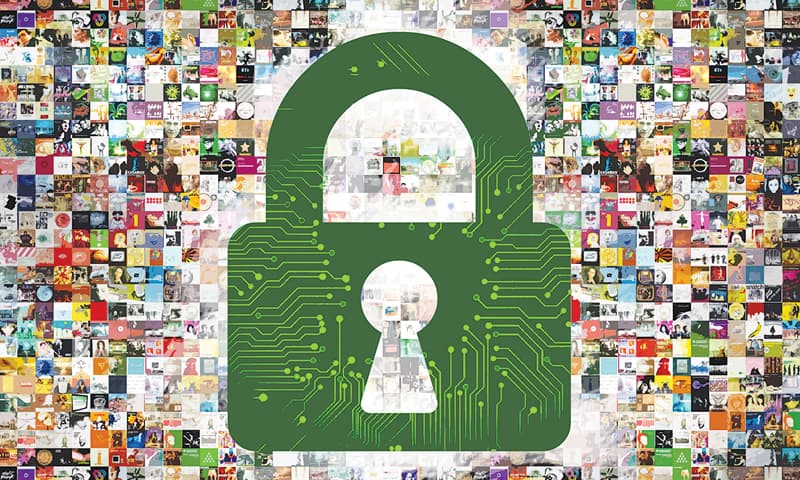
 More African governments are trying to control what’s being said on social media and blogs
More African governments are trying to control what’s being said on social media and blogs
 Uganda ‘feels’ Tanzania’s tightening grip on social media
Uganda ‘feels’ Tanzania’s tightening grip on social media
 Ruling party leaders want social media platforms indefinitely closed.
Ruling party leaders want social media platforms indefinitely closed.
 Court sets hearing date for social media shutdown lawsuit
Court sets hearing date for social media shutdown lawsuit
You may like
SPECIAL REPORTS AND PROJECTS
Global use of coal hit record high in 2024
Published
1 week agoon
November 3, 2025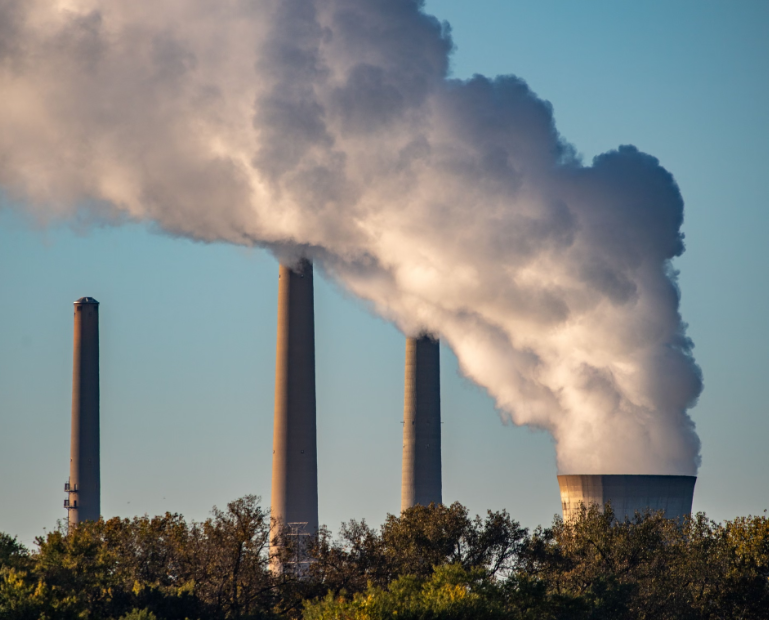
Bleak report finds greenhouse gas emissions are still rising despite ‘exponential’ growth of renewables.
Coal use hit a record high around the world last year despite efforts to switch to clean energy, imperilling the world’s attempts to rein in global heating.
The share of coal in electricity generation dropped as renewable energy surged ahead. But the general increase in power demand meant that more coal was used overall, according to the annual State of Climate Action report, published on Wednesday.
The report painted a grim picture of the world’s chances of avoiding increasingly severe impacts from the climate crisis. Countries are falling behind the targets they have set for reducing greenhouse gas emissions, which have continued to rise, albeit at a lower rate than before.
Clea Schumer, a research associate at the World Resources Institute thinktank, which led the report, said: “There’s no doubt that we are largely doing the right things. We are just not moving fast enough. One of the most concerning findings from our assessment is that for the fifth report in our series in a row, efforts to phase out coal are well off track.”
If the world is to reach net zero carbon emissions by 2050, in order to limit global heating to 1.5C above preindustrial levels, as set out in the Paris climate agreement, then more sectors must use electricity instead of oil, gas or other fossil fuels.
But this will work only if the global electricity supply is shifted to a low-carbon footing. “The trouble is that a power system that relies on fossil fuels has huge cascading and knock-on effects,” said Schumer. “The message on this is crystal clear. We simply will not limit warming to 1.5C if coal use keeps breaking records.”
Though most governments are supposed to be aiming to “phase down” coal use after a commitment made in 2021, some are pushing ahead with the most polluting fuel. India’s prime minister, Narendra Modi, celebrated surpassing 1bn tonnes of coal production this year, and in the US Donald Trump has declared his support for coal and other fossil fuels.
Trump’s efforts to halt renewable energy projects, and remove funding and incentives for switching to low-carbon power sources, have largely not made themselves felt yet in the form of higher greenhouse gas emissions. But the report suggested these efforts would have an effect in future, though others, including China and the EU, could blunt the impact by continuing to favour renewables.
The good news is that renewable energy generation has grown “exponentially”, according to the report, which found solar to be “the fastest-growing power source in history”. This is still not enough, however: the annual growth rates of solar and wind power need to double for the world to make the emissions cuts needed by the end of this decade.
Sophie Boehm, a senior research associate at the WRI’s systems change lab and a lead author of the report, said: “There’s no question that the United States’ recent attacks on clean energy make it more challenging for the world to keep the Paris agreement goal within reach. But the broader transition is much bigger than any one country, and momentum is building across markets and emerging economies, where clean energy has become the cheapest, most reliable path to economic growth and energy security.”
The world is moving too slowly on improving energy efficiency, in particular cutting the carbon generated by heating buildings. Industrial emissions are also a concern: the steel sector has been increasing its “carbon intensity” – the carbon produced with each unit of steel manufactured – despite efforts in some countries to move to low-carbon methods.
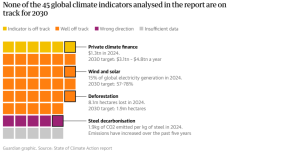
Electrifying road transport is moving faster – more than one in five new vehicles sold last year was electric. In China, the share was closer to half.
The report also sounded a warning on the state of the world’s “carbon sinks” – forests, peatlands, wetlands, oceans and other natural features that store carbon. While nations have repeatedly pledged to protect their forests, they continue to be cut down, albeit at a slower rate in some areas. In 2024, more than 8m hectares (20m acres) of forest were permanently lost. That is lower than the high of nearly 11m hectares reached in 2017, but worse than the 7.8m hectares lost in 2021. The world needs to move nine times faster to halt deforestation than governments are managing, the report found.
World leaders and high-ranking officials will meet in Brazil next month for the Cop30 UN climate summit, to discuss how to put the world on track to stay within 1.5C of global heating in line with the 2015 Paris climate agreement. Each government is supposed to submit a detailed national plan on emissions cuts, called a “nationally determined contribution”. But it is already clear that those plans will be inadequate, so the key question will be how countries respond.
Source: theguardian.com
Related posts:
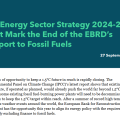
 African Development Bank decides not to fund Kenya coal project
African Development Bank decides not to fund Kenya coal project
 World Bank branch indirectly backs coal megaproject despite green pledge
World Bank branch indirectly backs coal megaproject despite green pledge
 Banks have given almost $7tn to fossil fuel firms since Paris deal, report reveals
Banks have given almost $7tn to fossil fuel firms since Paris deal, report reveals
 30 civil society organizations have written to the World Bank Group demanding to publicly disclose the Africa Energy Approach paper.
30 civil society organizations have written to the World Bank Group demanding to publicly disclose the Africa Energy Approach paper.
SPECIAL REPORTS AND PROJECTS
The Environmental Crisis Is a Capitalist Crisis
Published
1 week agoon
November 3, 2025
One of humanity’s greatest challenges today is the environmental crisis, which threatens our very existence. Our latest dossier explores its class character, showing that the climate catastrophe is a product of capitalism’s relentless drive for accumulation.
The photographs in this dossier were taken by Sebastião Salgado, one of Brazil’s – and the world’s – greatest photographers. He passed away in May 2025, leaving behind an artistic legacy inseparable from his commitment to humanity and the preservation of the environment. Salgado travelled the globe portraying peoples, territories, and workers with dignity, capturing life’s beauty while bearing witness to an era marked by capitalism’s brutality against humanity and nature. His photographs, like this dossier, remind us that we cannot remain mere spectators of destruction: we must be agents of change.
We are grateful to the team that safeguards his legacy and, in a spirit of solidarity, authorised the use of his images to enrich and strengthen this dossier.

Capitalism Will Not Solve the Environmental Crisis
The environmental crisis is one of the greatest challenges we face today. At its root lie the capitalist mode of production and the logic of capital accumulation pursued by the ruling classes of the Global North and South. The devastation wrought by capitalism is plain for all to see, as climate change intensifies and accelerates year after year, threatening the very existence of humanity. As Fidel Castro warned in his speech at the 1992 UN Conference on Environment and Development in Rio de Janeiro, ‘An important biological species is in danger of disappearing due to the rapid and progressive liquidation of its natural living conditions: humanity’.1
Many international organisations and bodies have sought solutions to the environmental crisis, but always within the framework of capitalism. In November 2025, the United Nations Climate Change Conference (COP30) will be held in Belém, Pará, in the Amazon region of Brazil. The Amazon is home to countless generations of Indigenous peoples who, through their interaction with nature, have allowed the planet’s most biodiverse ecosystem to flourish.
Today, the Amazon is the site of one of capitalism’s central contradictions: agribusiness destroys it by burning and clearing land to expand the agricultural frontier while the very same land is financialised by transnational corporations trading its territories as carbon reserves on stock exchanges. While the ruling classes insist on presenting the environmental crisis as a problem for all of humanity – without any class distinctions – we must not forget that the class contradictions inherent to capitalism are also reflected in the environmental question. In fact, those most affected by climate disasters are the urban and rural poor, who live under precarious conditions in hazard-prone areas.
One of the main tasks in the battle of ideas is therefore to politicise the debate around the environmental crisis by showing its class character – something that is urgently needed, as reflected by a recent survey that found that more than 30% of Brazil’s population is unaware of climate change, with this figure rising to over 50% among the lowest income groups.2
In light of this reality, this dossier seeks to popularise the debate on the environmental crisis from a Brazilian and Global South perspective in dialogue with working-class organisations. In this dossier, we analyse the causes of the environmental crisis and examine, and critique, proposals for a transition to a low-carbon economy. By seeking alternatives within capitalism, such proposals create new forms of accumulation without resolving the root problem. Finally, we present popular solutions to the crisis along with a set of demands that have emerged from the accumulated experience of Brazil’s popular movements.
Serra Pelada Goldmine, Pará, Brazil, 1986. © Sebastião Salgado
The Destruction of Life and the Logic of Capital
Climate change is the most visible and urgent aspect of the environmental crisis. Chemical pollution, loss of soil cover, ocean acidification, biome destruction, and the loss of biodiversity are also fundamental dimensions of the crisis. As Vijay Prashad rightly pointed out:
One million of the estimated eight million species of plants and animals on the planet are threatened with extinction. The main threat to the majority of species at risk of extinction is biodiversity loss caused by the capitalist agribusiness system of food production. Agricultural production – currently accounting for more than 30% of the world’s habitable land surface – is responsible for 86% of projected losses in terrestrial biodiversity because of land conversion, pollution, and soil degradation.3
The environmental crisis manifests in ways that underscore its inseparability from the class struggle. We see this in the floods that devastated southern Brazil in 2024; the heatwave and then floods that hit Pakistan in 2022, leaving millions homeless while elites remained protected; the 2018 floods in Kerala, India; the 2022 flooding and blackouts in Cuba caused by Hurricane Ian – a phenomenon intensified by rising ocean temperatures; and the increasingly extreme cycles of floods and droughts in the Horn of Africa. From 2019 to 2020, Ethiopia, Kenya, and Somalia faced heavy rains followed by devastating floods. From 2020 to 2023, these countries faced one of the longest droughts in the past seventy years, only to be hit by new floods in 2023–2024. These instances show that the environmental crisis is deepening.4
The main factor driving climate change is the high level of greenhouse gas (GHG) emissions from fossil fuels as energy consumption from these fuels continues to rise year after year. If we take a closer look at global emission levels, the data once again speaks volumes: the richest 10% are responsible for nearly twenty times more emissions than the poorest 50%.5
Moreover, both historic and current GHG emissions are directly linked to inequality – not only between the Global North and South but also between the richest and poorest segments of the global population. According to the Global Carbon Project, the twenty-three most developed countries account for half of all CO2 emissions since 1850. The United States alone has emitted 24.6% of all carbon released into the atmosphere, followed by Germany (5.5%), the United Kingdom (4.4%), and Japan (3.9%). The other half of emissions is spread across more than 150 countries.6
Recent data shows that this reality has not changed: according to a 2022 study by Climate Watch, the World Resources Institute’s data platform, the ten largest emitters are still responsible for 76% of global CO2 emissions. In 2022 China was the largest emitter of CO2, followed by the United States, India, Russia, and Japan, which would make Asia the planet’s biggest emitter today.7
However, because the populations of countries such as China and India are much larger than those of the United States, European countries, Japan, or Australia, measured in per capita emissions the United States is by far the world’s largest CO2 emitter, with a per capita rate twice that of China and eight times higher than India’s.8
Globally, the fossil fuel industry is the largest emitter of CO2, with roughly one hundred companies responsible for 71% of global historical CO2 emissions, according to a Carbon Majors report published in 2017.9
Among them are giants such as ExxonMobil, Shell, BHP Billiton, and Gazprom. Another 2019 study by the Climate Accountability Institute found that just twenty companies have been responsible for one-third of all global CO2 emissions since 1965.10
Agribusiness is another structural driver of GHG emissions. In 2023 alone, 3.7 million hectares of forest were cleared worldwide, largely for cattle ranching and industrial crops. Over the past twenty years, the sector’s production chain – from fertilisers to processing and transport – has increased its emissions by 130%.11
Though the energy sector accounts for approximately three-quarters of GHG emissions on a global scale, it is worth taking a closer look at countries where raw materials dominate exports. Brazil is a striking example of this: according to the Plan for Ecological Transformation published by the Ministry of Finance, agribusiness is the country’s largest source of GHG emissions, directly accounting for 29% of the total. Deforestation-related emissions add another 38%, with livestock and agriculture responsible for about 96% of deforested land, according to the 2022 Annual Deforestation Report. Taken together, agribusiness is responsible for roughly 67% of Brazil’s total GHG emissions, compared to just 23% from energy generation.12
Predatory extractive practices also play a major role, especially in Global South countries, from mining to the purchase of natural and Indigenous reserve lands by foreign interests as carbon market assets.
Despite regional and national differences, what is clear is that climate change and the destruction of nature are direct consequences of the logic of capital accumulation advanced by the ruling classes.
Kuningan District, Jakarta, Indonesia, 1996. © Sebastião Salgado
Green Capitalism: Supposed Alternatives to the Environmental Crisis
Various socialist currents have raised ecological concerns since the early days of capitalism, from the nineteenth-century socialist and artist William Morris to the environmental and countercultural movements of the mid-twentieth century. Yet it was only in the 1970s, more than a century after the first industries appeared, that the environment became a matter of concern for nation-states and began to gain prominence on the international political agenda. The 1972 United Nations Conference on the Human Environment, held in Stockholm, Sweden, was a milestone in advancing the environmental question. As Andrei Cornetta notes:
In addition to population growth in a context of resource scarcity, [the conference] also discussed how to bring various forms of [water, air, and soil] pollution under control at a time when the global energy crisis was on the agenda, especially after the impact of the oil shock of 1973.13
Despite the urgency of the environmental question, no new forms of organising production or relating to nature were proposed at the conference: rather, all alternatives fit within the capitalist mode of production. Meanwhile, growing social and economic inequality between the imperialist core and the dependent periphery sharpened the debate, especially regarding whether to continue developing or to restructure the industrial model along ‘zero growth’ lines.14
In 1979, the First World Climate Conference in Geneva acknowledged the seriousness of ongoing climate change. It was not until 1992 that the Second United Nations Conference on Environment and Development took place in Rio de Janeiro, where a multilateral agenda to address the climate question was proposed. This agenda entered into force in 1994 and served as the precursor to the Conference of the Parties (COP), the decision-making body for the United Nations Framework Convention on Climate Change which meets biennially to review and advance the convention.
Among the many outcomes of the COP process, two stand out. First, the Kyoto Protocol, adopted after COP 3 in 1997, which set binding quantitative targets for reducing GHG emissions for Annex I countries (those that had been industrialised the longest). Second, the Paris Agreement, adopted after COP 21 in 2015, which required signatory countries to set their own emission reduction targets, known as Intended Nationally Determined Contributions.15
However, the targets were never met and both the Kyoto and Paris agreements ended up as failures.
In response to the urgency of climate change, some states have promoted a transition to a low-carbon economy aimed at reducing the amount of harmful GHG emissions – without, of course, touching the profits of major corporations and the capitalist core. From this approach emerged so-called ‘green capitalism’ alternatives, including carbon markets, offset schemes, and energy transition policies.
The Kyoto Protocol emission targets, initially intended to curb air pollution, soon became the basis for a new form of capital accumulation via so-called carbon credits16
that are traded on stock exchanges and function as a kind of ‘license to pollute’.17
This system involves not only financial capital but also significant technological and scientific developments that measure and calculate carbon emissions. They also project potential reductions by modelling what emissions would have been in the absence of offset activities. These offset schemes include reducing emissions caused by deforestation and forest degradation as well as promoting forest conservation, sustainable management, and an increase in forest carbon stocks. However, in practice, once companies exceed their GHG emission limits, they can buy carbon credits on the stock exchange to offset their emissions. Thus, the biophysical process by which plants absorb carbon from the air and convert it to oxygen through photosynthesis – a natural function of plant life and part of the commons – is turned into a commodity.
The main contradiction of green capitalism is that the same agribusiness, oil, and mining transnational corporations that shape the environmental agenda in international bodies and national governments are also those that most aggressively exploit the commons. The agribusiness sector, which drives deforestation and burning in the Cerrado and Amazon biomes18
in order to expand the agricultural frontier, also touts the digitalisation of its production chains, which certify that its products are deforestation-free and decarbonised. Similarly, oil corporations are involved in energy transition policies, and mining companies promote carbon market schemes.
In Brazil, agribusiness – the main source of the country’s GHG emissions – has made sustainability a central theme of its ideological campaign. Far from a genuine commitment to sustainability, this serves as a way to expand into other sectors, increase political influence, and boost profits.19
The agribusiness model – based on large-scale monocultures and the extensive use of pesticides – is among the most damaging to the environment. Yet while companies pursue new avenues of profit through the financialisation of nature and a discourse of sustainability, their production model has not changed; on the contrary, it continues to drive deforestation, burning, and the poisoning of soil, water, and air.
By playing an active role in advancing false solutions to the environmental crisis, the very sectors that most damage the environment have found new ways to profit from the financialisation of nature. These sectors are present not only in government ministries across many countries, but also in international climate bodies and conferences such as the COP. The environmental agenda has long been captured by transnational corporations, and the alternatives they propose never challenge the profit rates of big capital. Brazilian agribusiness, with its rhetoric of sustainability, is among the key players in these international bodies. Brazilian companies such as Suzano Papel e Celulose,20
the food multinational JBS, and the mining corporation Vale all play a major role in ‘sustainability’ projects and the carbon market. For them, offset schemes have become a lucrative form of capital accumulation.
Take, for example, the Maísa project in the Brazilian state of Pará, run by the leading carbon market certifier Verra. The project was meant to preserve a 26,000-hectare stretch of the Amazon rainforest that included the Sipasa Farm, yet the designated protection area later became a mining site, and in early 2024 sixteen farm workers were rescued from conditions comparable to slavery. The fallacy – and failure – of such projects is clear: they serve transnational giants like iFood, Uber, Spotify, Audi, and Google, which pour millions of dollars into offset schemes to cover the emissions generated by their own activities.21
In addition to commodifying one of nature’s commons, projects like Maísa harm biodiversity and undermine the way of life of Indigenous communities who, through the labour of countless generations, have helped shape these forests and their biodiversity. By promoting solutions that fail to confront the destructive logic of capitalist accumulation, such schemes destroy ways of life that have coexisted in harmony with nature for millennia.
The 2019 report by the Intergovernmental Science-Policy Platform on Biodiversity and Ecosystem Services paints an alarming picture of ecological collapse brought on by such projects:
One million of the roughly eight million plants and animal species are threatened with extinction; human activity has driven at least 680 vertebrate species to extinction since 1500, while global populations of vertebrate species have fallen by 68% over the last fifty years; the abundance of wild insects has fallen by 50%; and by 2016, more than 9% of all domesticated mammal breeds used in food and agriculture had gone extinct, with another thousand breeds now facing extinction.22
One thing is clear: there are no capitalist solutions to a crisis created by capitalism. If we are to save the Earth and humanity, the answers must come from beyond capitalism.
Cuiabá Farm, Xingó Backlands, Sergipe, Brazil, 1996. © Sebastião Salgado
Popular Perspectives on the Environmental Question
At the 1992 UN Conference on Environment and Development in Rio de Janeiro, Fidel Castro underscored the urgency of the environmental crisis from an emancipatory perspective and condemned the unjust economic and social order between dependent countries in the periphery and those at the capitalist core:
It must be said that consumer societies are primarily responsible for the atrocious destruction of the environment… With only 20% of the world’s population, they consume two-thirds of the metals and three-quarters of the energy produced worldwide. They have poisoned the seas and rivers, polluted the air, weakened and perforated the ozone layer, and saturated the atmosphere with gases that alter the climate with catastrophic effects from which we are already beginning to suffer… It is impossible to blame this on the countries of the Third World – yesterday’s colonies, today’s exploited and plundered nations by an unjust world economic order… If we are to save humanity from this self-destruction, we must achieve a fairer distribution of the wealth and technology available on the planet – less luxury and less waste in a few countries so that there may be less poverty and less hunger across much of the Earth.23
What is at stake is nothing less than the survival of human life on Earth. The environmental crisis is a product of the crisis of capital, which not only fails to resolve problems such as hunger and inequality but deepens them while relentlessly seeking new ways to generate profit for the ruling classes. The environmental struggle must therefore be waged as a direct confrontation with, and ultimate overcoming of, the capitalist mode of production. Unless we challenge the logic of capital – based on the exploitation of working-class labour and the plunder of the Global South – we will not be able to confront the environmental crisis.
The struggle for climate justice must combat not only inequality between the Global North and South but also environmental racism, as it is the poorest, and disproportionately Black and Brown, populations in the Global South that are the most exposed to the effects of the environmental crisis. In Brazil, for example, a study found traces of glyphosate – one of the most widely used pesticides in agribusiness – in breast milk across several regions. Meanwhile, the environmental crimes committed by the mining transnationals Samarco, Vale, and BHP Billiton in the cities of Mariana (2015) and Brumadinho (2019), in Minas Gerais state, not only killed nearly 300 people but also devastated the biodiversity of the Doce River, which runs through Minas Gerais and Espírito Santo, disrupting the way of life of numerous comunidades ribeirinhas<24 (river communities).25
Brazil’s Black population, which is concentrated in urban peripheries, is also disproportionately affected by the environmental crisis, such as in the form of frequent floods and landslides. Women, too, are more acutely impacted than the general population; in rural areas, for example, it often falls on them to handle the pesticides that the agribusiness production model imposes on peasant families. Environmental and climate justice movements must therefore build close connections with antiracist and feminist struggles. The environmental crisis cannot be solved without confronting all forms of social inequality, from racism to patriarchy.
Among the many fronts of struggle, peasant movements linked to La Vía Campesina stand out. Their agenda calls for:
- Popular Agrarian Reform and the Defence of Peasant and Indigenous Territories. Popular Agrarian Reform is the struggle to democratise access to land, directly confront latifundios (large, landed estates), and combat the concentration of land in the hands of the few. This demand goes beyond land redistribution: it challenges the agribusiness model that commodifies nature and deepens the environmental crisis. The struggle for land is tied to the protection of Indigenous and quilombola lands, recognising land concentration as a colonial legacy that must be overcome. By defending peasant and Indigenous territories, La Vía Campesina seeks to ensure that land fulfils its social function as a space for life, work, and cultural reproduction rather than being reduced to a financial asset.
- Food Sovereignty. Food sovereignty is the right of peoples to decide what to produce, as well as for whom and how to produce it, and to guarantee access to healthy and culturally appropriate food. It stands in opposition to the logic of agribusiness, which prioritises export commodities over feeding the people. To achieve food sovereignty, it is essential to support regional food cultures, strengthen short supply chains, and prevent food production from being controlled by large corporations. In order to achieve food sovereignty, public policies must be enacted that strengthen peasant agriculture and ensure that food is treated as a right, not a business; such policies include mandating the institutional purchase of agroecological products and support of those markets.
- Agroecology. Agroecology calls for a radical change in the technological model of agriculture, replacing the predatory system of agribusiness with diversified forms of production that are in harmony with nature. This includes the use of bio-inputs, agroforestry, and sustainable soil management, which create biodiverse environments that are resilient to climate change. Beyond its technical dimension, agroecology is a political practice that builds new relationships between human beings and nature based on cooperation, peasant autonomy, and the recovery of traditional knowledge.
- Care for the Commons. Water, minerals, seeds, land, and biodiversity are not mere ‘natural resources’ or ‘raw materials’ to be exploited: they are commons that are essential to life. Protecting the commons is central to building a popular project for the countryside in which nature is not commodified but rather cared for as collective heritage, ensuring their care for current and future generations.
A central component of Brazil’s Landless Workers’ Movement (MST) is to plant trees and produce healthy food. This is an integral part of building popular agrarian reform, since overcoming the environmental crisis will only be possible through a new model of rural production based on agroecology and new social relations that overcome patriarchy, racism, and LGBTphobia while fostering cooperation and solidarity. As MST leader João Pedro Stédile said about the particular challenges that Brazil faces with respect to the environmental crisis (though his words apply to the Global South more broadly):
We need zero deforestation. There is no need to cut down a single tree to meet the people’s needs. We must ban the export of timber and gold and impose strict controls over mining activities and their environmental impacts. The country needs a publicly funded national reforestation plan to recover millions of hectares throughout the territory. To tackle pollution, mitigate rising temperatures, and confront the problem of individual transportation powered by fossil fuels, we must provide a plan for free, high-quality mass public transport, reforest major cities, and expand the use of solar energy in as many productive activities as possible. In the countryside, agrarian reform must advance with a national agroecology programme that produces healthy food free of agrotoxins for all the people.26
Another perspective that has emerged from social struggles in Latin America, especially in Ecuador and Bolivia, is buen vivir (good living), whose principles were incorporated into the new constitutions of both countries under presidents Rafael Correa and Evo Morales, respectively. Drawing on Indigenous traditions, buen vivir challenges capitalist notions of progress and development and is based on five principles: 1) a holistic vision, or Pacha;27
2) embracing multipolarity; 3) the search for balance; 4) the complementarity of diversity; and 5) decolonisation.28
Ecosocialism, for its part, is a political and theoretical current that combines socialism with radical ecology, criticising both capitalism and traditional socialism for ignoring the planet’s ecological limits. It aims to build an egalitarian and sustainable society in which the economy is reorganised to meet human needs without destroying the environment. For Michael Löwy, one of ecosocialism’s leading theorists, the central dilemma facing the working classes in the twenty-first century is the environmental crisis, which must be addressed from a socialist perspective that conceives of a new mode of production attuned to ecological challenges.
The environmental crisis will not be resolved by the ruling classes. This is the task of the rural and urban working classes. We must create another way of producing and reproducing life that is based on healthy relations between human beings and the environment and built through popular organisation. This path forward must expose the true culprits of the crisis and advance proposals that prioritise all forms of life over profit.
Pico da Neblina, Yanomami Indigenous Territory, Amazonas, Brazil, 2014. © Sebastião Salgado
A Minimum Agenda to Confront the Environmental Crisis
Brazil’s popular movements understand the need to wage struggles on multiple fronts. Despite the limits of the COPs and the negotiations held there, popular movements recognise that it is essential to pressure their governments to secure a minimum agenda that holds the social classes and countries most responsible for pollution accountable and combats the climate catastrophe driven by capitalism. In this spirit, working alongside the MST, we created an agenda to confront the environmental crisis:
I. Compliance with and Advancement of International Agreements
- Building on the agreements of the 1992 United Nations Conference on Environment and Development, which established the principle of ‘common but differentiated responsibilities’, compel Global North countries – which bear historical responsibility for the climate crisis – to rapidly cut their carbon emissions and prevent global temperatures from rising above the critical 1.5°C threshold.
- Ensure that Global North countries provide climate compensation to Global South countries for the losses and damages caused by their carbon emissions and provide substantial funding for public infrastructure to replace reliance on carbon-based energy.
- Fulfil the Paris Agreement pledge that Global North countries provide $100 billion annually to meet the needs of Global South countries, particularly for policies that mitigate the real and disastrous impacts of climate change that they are already experiencing (especially low-lying nations and small island states). These resources must come in the form of grants directly transferred to subnational projects for forest protection and restoration. Since loans are not transfers of resources, they should not be considered to fit within the scope of the Paris Agreement, though this has often been the case. These funds should serve as instruments of climate justice, not as pretexts for financial sector profit obtained through private or multilateral development banks.
- Transfer technology and financing to Global South countries to phase out carbon-based energy systems and build alternatives based on sovereign national strategies.
- Hold Global North countries accountable for polluting water, soil, and air with toxic and hazardous waste – including nuclear waste – such as by making them bear the costs of cleanup and by prohibiting technologies and modes of production that generate such waste.
II. A Planned and Just Energy Transition with Social Participation
An energy transition programme is needed to adapt carbon-based energy systems in order to mitigate their environmental impact. It must be carefully planned, carried out with broad social participation, and supported by financing channels for Global South countries that respond to their specific needs. In addition, it must diversify the energy grid, improve energy efficiency, and guarantee the raw material supply needed for any future energy transition. This programme must:
- End direct and indirect government subsidies for the fossil fuel industry.
- Aggressively increase taxes on emissions and polluting products.
- Prohibit the financial sector’s participation in the fossil fuel industry in order to prevent any transition from being driven by financial speculation.
- Receive state investments in order to combat the climate catastrophe, protect and support affected populations, and restore the environment, as well as guarantee that such investments will not be restricted or undermined by local or international austerity policies. It is the responsibility of states to safeguard the rights of populations affected by these projects.
III. Protection of and Support for Peasant Agriculture and Food Sovereignty
- Implement comprehensive agrarian reforms that decentralise and democratise access to land, making it feasible for peasants to return to the countryside, and replace destructive agribusiness practices with agroecological production.
- Build and support mechanisms that spread and aid with the implementation of agroecology by providing technical assistance and financing for peasant farmers.
- Eliminate synthetic agrotoxins by 2035 and reduce synthetic fertilisers by half within the same period.
- Support the widespread use of bio-inputs for agroecological farming by creating bio-factories (community facilities that produce and reproduce natural inputs such as biofertilisers and biopesticides). Provide the necessary equipment for their use and guarantee free technical assistance for farmers.29
- Protect peasants’ rights to biodiverse seeds. Guarantee the intellectual property rights of Indigenous and traditional communities by combatting biopiracy and the appropriation of our knowledge and practices.
- Restructure livestock farming so that herd sizes and practices correspond to land capacity and food demand – not to the demands of the market.
- Ban all unproven agricultural technologies and eliminate all public subsidies for harmful practices and products.
- Adopt public policies that regulate and protect agricultural markets and the right to healthy, culturally appropriate food.
- Prioritise agroecological products in government food-purchasing programmes.
- Establish legislation to protect agroecological production zones, creating areas free from poisons, GMOs, and aerial spraying.
- Require governments to conduct studies that assess the need to rethink agricultural and livestock activities in response to global warming. This includes creating new agroclimatic maps and developing policies that protect biodiversity and ecosystem services.30
These studies must also involve, in a meaningful way, the communities rooted in each territory and draw on their culture and expertise.
- Ensure that technological products and processes used in rural areas are reassessed every five years, drawing on the participation of civil society representatives.
IV. Effective Policies for Reforestation and Combatting Deforestation
- Take all necessary measures to prevent the Amazon from reaching its point of no return, such as by protecting 80% of its territory by 2026.
- Halt all illegal deforestation by 2026.
- Achieve zero legal deforestation by 2027.
- Halt the expansion of the agricultural frontier by sanctioning companies and individuals responsible for land grabbing, displacing forest-dwelling peoples, and producing goods that drive deforestation, degradation, and pollution.
- Prohibit funds from the Paris Agreement from being channelled to agribusiness, mining, or false solutions like replanting and offset schemes in protected areas.
- Repeal legal instruments that promote the destruction of the Amazon.
- Rehabilitate, recover, and restore deforested and degraded areas.
- Ensure that all Indigenous, Afro-descendant, quilombola, and traditional communities in the Amazon are given titles to their ancestral lands as well as full legal and physical protection of their collective ownership of these lands.
- Guarantee respect for the territorial rights of isolated Indigenous peoples and implement a gender perspective in the distribution of land titles.
- Strengthen alternatives for an agroecological transition as well as community-based agroforestry production and ecotourism.
- Guarantee the meaningful participation of forest-dwelling peoples in every stage of the energy production chain – including planning, management, and governance – as part of building a just, popular, and comprehensive energy transition.
- Ban subsidies, investments, and financial credits for projects that destroy forests.
- Classify ecocide as a crime in national legislation and ensure the punishment of all environmental crimes.
- Prosecute corporations and companies responsible for environmental disasters in their countries of origin and require them to repair the damage done to nature and affected peoples.
- Promote financing for projects that protect the Amazon and other forests of the Global South, ensuring that all debt-for-climate or debt-for-nature swaps are: a) comprehensive, transparent, direct, and carried out with the participation of the peoples of the Amazon in ways that are self-determined, self-organised, and self-managed; b) embedded in current financing mechanisms with guaranteed participation, oversight, and social accountability to prevent abuse, waste, and corruption; and c) designed to ensure that nature is not commodified.
- Establish a carbon tax on major polluting industries and agribusinesses, directing the revenue toward protecting the Amazon and other forests of the Global South.
- Ban forest offsets and other forms of financial speculation and false market solutions in these territories.
- Require governments to implement large-scale reforestation projects, the countryside, and cities and to support the production and distribution of seedlings and the restoration of degraded areas.
V. Proper Planning and Management of Water Resources
- Use water efficiently, prioritising human and animal consumption and agroecological production over corporate interests.
- Manage aquatic systems to include the creation of protected areas that safeguard the health of river basins.
- Subsidise agroforestry, with an emphasis on food production in family farming units connected to food supply systems.
VI. Restrictions on Mining
- Immediately halt and combat illegal mining.
- Reduce mercury use in mining each year until it is fully eliminated.
- Ban mining in Indigenous, ancestral, and communal territories.
- Establish plans to restore areas degraded by mining.
- Implement remediation plans for ecosystems and communities affected by mercury and other mining impacts.
- Create monitoring systems and penalties for activities that compromise surface and groundwater quality.
Read full dossier : thetricontinental.org
Related posts:

 Almost 2,000 land and environmental defenders were killed between 2012 and 2022 for simply standing up to protect our planet and us all from the accelerating climate crisis.
Almost 2,000 land and environmental defenders were killed between 2012 and 2022 for simply standing up to protect our planet and us all from the accelerating climate crisis.
 African women unite on the frontlines of the Climate Crisis
African women unite on the frontlines of the Climate Crisis
 UN warns over looming food crisis in Uganda
UN warns over looming food crisis in Uganda
 The Deadly Toll of Land and Environmental Activism
The Deadly Toll of Land and Environmental Activism
SPECIAL REPORTS AND PROJECTS
Top 10 agribusiness giants: corporate concentration in food & farming in 2025
Published
3 months agoon
August 28, 2025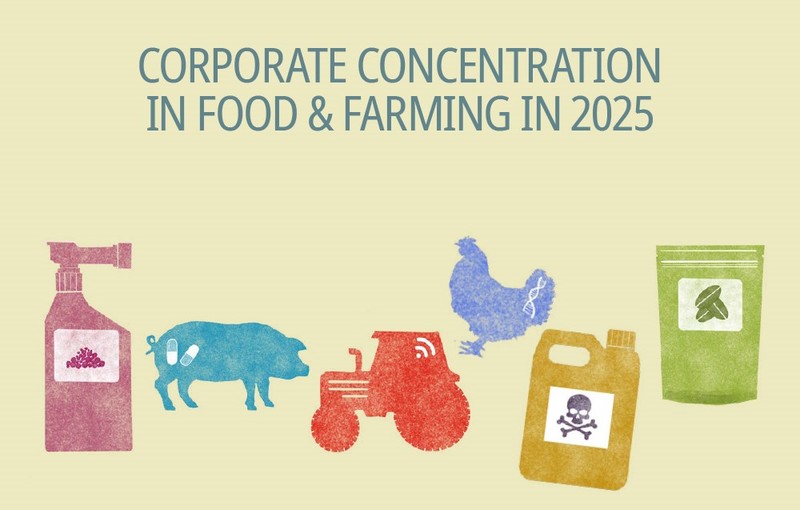

|
Ranking
|
Company (Headquarters)
|
Sales in 2023
(US$ millions)
|
% Global market share 19
|
|
1
|
Bayer (Germany)20
|
11,613
|
23
|
|
2
|
Corteva (US)21
|
9,472
|
19
|
|
3
|
Syngenta (China/Switzerland)22
|
4,751
|
10
|
|
4
|
BASF (Germany)23
|
2,122
|
4
|
|
Total top 4
|
27,958
|
56
|
|
|
5
|
Vilmorin & Cie (Groupe Limagrain) (France)24
|
1,984
|
4
|
|
6
|
KWS (Germany)25
|
1,815
|
4
|
|
7
|
DLF Seeds (Denmark)26
|
838
|
2
|
|
8
|
Sakata Seeds (Japan)27
|
649
|
1
|
|
9
|
Kaneko Seeds (Japan)28
|
451
|
0.9
|
|
Total top 9
|
33,695
|
67
|
|
|
Total world market29
|
50,000
|
100%
|
|
Ranking
|
Company (Headquarters)
|
Sales in 2023
(US$ millions)
|
% Global market share
|
|
1
|
Syngenta (China/Switzerland)43
|
20,066
|
25
|
|
2
|
Bayer (Germany)44
|
11,860
|
15
|
|
3
|
BASF (Germany)45
|
8,793
|
11
|
|
4
|
Corteva (US)46
|
7,754
|
10
|
|
Total top 4
|
48,472
|
61
|
|
|
5
|
UPL (India)47
|
5,925
|
8
|
|
6
|
FMC (Germany)48
|
4,487
|
6
|
|
7
|
Sumitomo (Japan)49
|
3,824
|
5
|
|
8
|
Nufarm (Australia)50
|
2,056
|
3
|
|
9
|
Rainbow Agro (China)51
|
1,623
|
2
|
|
10
|
Jiangsu Yangnong Chemical Co., Ltd. (China)52
|
1,595
|
2
|
|
Total top 10
|
67,982
|
86
|
|
|
Total world market53
|
79,000
|
100
|
|
Ranking
|
Company (Headquarters)
|
Sales in 2023
(US$ millions)
|
% Global market share
|
|
1
|
Nutrien (Canada)72
|
15,673
|
8
|
|
2
|
The Mosaic Company (US)73
|
12,782
|
7
|
|
3
|
Yara (Norway)74
|
11,688
|
6
|
|
4
|
CF Industries Holdings, Inc, (US)75
|
6,631
|
3
|
|
Total top 4
|
46,774
|
24
|
|
|
5
|
ICL Group Ltd. (Israel)76
|
6,294
|
3
|
|
6
|
OCP (Morocco)77
|
5,967
|
3
|
|
7
|
PhosAgro (Russia)78
|
4,989
|
3
|
|
8
|
MCC EuroChem Joint Stock Company (EuroChem) (Switzerland/Russia)79
|
4,298
|
2
|
|
9
|
OCI (Netherlands)80
|
4,188
|
2
|
|
10
|
Uralkali (Russia)81
|
3,497
|
2
|
|
Total top 10
|
76,007
|
39
|
|
|
Total world market82
|
196,000
|
100
|
|
Ranking
|
Company (Headquarters)
|
Sales in 2023
(US$ millions)
|
% Global market share
|
|
1
|
Deere and Co. (US)89
|
26,790
|
15
|
|
2
|
CNH Industrial (UK/Netherlands)90
|
18,148
|
10
|
|
4
|
AGCO (US)91
|
14,412
|
8
|
|
3
|
Kubota (Japan)92
|
14,233
|
8
|
|
Total top 4
|
73,583
|
43
|
|
|
5
|
CLAAS (Germany)93
|
6,561
|
4
|
|
6
|
Mahindra and Mahindra (India)94
|
3,156
|
2
|
|
7
|
SDF Group (Italy)95
|
2,197
|
1
|
|
8
|
Kuhn Group (Switzerland)96
|
1,583
|
0.9
|
|
9
|
YTO Group (China)97
|
1,493
|
0.9
|
|
10
|
Iseki Group (Japan)98
|
1,057
|
0.6
|
|
Total top 10
|
89,629
|
52
|
|
|
Total world market99
|
173,000
|
100
|
|
Ranking
|
Company (Headquarters)
|
Sales in 2023
(US$ millions)
|
% Global market share
|
|
1
|
Zoetis (US)115
|
8,544
|
18
|
|
2
|
Merck & Co (MSD) (US)116
|
5,625
|
12
|
|
3
|
Boehringer Ingelheim Animal Health (Germany)117
|
5,100
|
11
|
|
4
|
Elanco (US)118
|
4,417
|
9
|
|
Total top 4
|
23,686
|
49
|
|
|
5
|
Idexx Laboratories (US)119
|
3,474
|
7
|
|
6
|
Ceva Santé Animale (France)120
|
1,752
|
4
|
|
7
|
Virbac (France)121
|
1,348
|
3
|
|
8
|
Phibro Animal Health Corporation (US)122
|
978
|
2
|
|
9
|
Dechra (UK)123
|
917
|
2
|
|
10
|
Vetoquinol (France)124
|
572
|
1
|
|
Total top 10
|
32,727
|
68
|
|
|
Total world market125
|
48,000
|
100
|
 The genetic material used in the industrial production of meat, dairy and aquaculture is supplied by a small number of relatively unknown companies that are mostly privately owned. As detailed financial data is not publicly available for most of these companies, it is difficult to determine companies’ market shares and even the value of the global market. However, it was possible to arrive at some estimates for chicken, which tops global meat production (narrowly exceeding pigs).126
The genetic material used in the industrial production of meat, dairy and aquaculture is supplied by a small number of relatively unknown companies that are mostly privately owned. As detailed financial data is not publicly available for most of these companies, it is difficult to determine companies’ market shares and even the value of the global market. However, it was possible to arrive at some estimates for chicken, which tops global meat production (narrowly exceeding pigs).126Related posts:

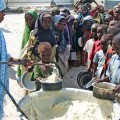 CORPORATE AGRIBUSINESS GIANTS SWIM IN WEALTH AS MORE POOR PEOPLE GO HUNGRY AMID THE BITING COVID PANDEMIC.
CORPORATE AGRIBUSINESS GIANTS SWIM IN WEALTH AS MORE POOR PEOPLE GO HUNGRY AMID THE BITING COVID PANDEMIC.
 A corporate cartel fertilises food inflation
A corporate cartel fertilises food inflation
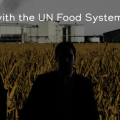 The United Nations Food Systems Summit is a corporate food summit —not a “people’s” food summit
The United Nations Food Systems Summit is a corporate food summit —not a “people’s” food summit
 Food inflation: The math doesn’t add up without factoring in corporate power
Food inflation: The math doesn’t add up without factoring in corporate power

Uganda’s Army is on the spot for forcibly grabbing land for families in Pangero Chiefdom in Nebbi district.

Climate wash: The World Bank’s Fresh Offensive on Land Rights

Africa’s Land Is Not Empty: New Report Debunks the Myth of “Unused Land” and Calls for a Just Future for the Continent’s Farmland

Discover How Foreign Interests and Resource Extraction Continue to Drive Congo’s Crisis

StopEACOP Coalition warns TotalEnergies and CNOOC investors of escalating ‘financial and reputational’ Risks

Oil palm tree growing in Uganda: The National Oil Palm Project is threatening to evict hundreds of smallholder farmers to expand its operations.

New! The Eyes on a Just Energy Transition in Africa Program is now live on Witness Radio.

Know Your Land rights and environmental protection laws: a case of a refreshed radio program transferring legal knowledge to local and indigenous communities to protect their land and the environment at Witness Radio.

Innovative Finance from Canada projects positive impact on local communities.
Over 5000 Indigenous Communities evicted in Kiryandongo District
Petition To Land Inquiry Commission Over Human Rights In Kiryandongo District
Invisible victims of Uganda Land Grabs
Resource Center
- REPARATORY AND CLIMATE JUSTICE MUST BE AT THE CORE OF COP30, SAY GLOBAL LEADERS AND MOVEMENTS
- LAND GRABS AT GUNPOINT REPORT IN KIRYANDONGO DISTRICT
- THOSE OIL LIARS! THEY DESTROYED MY BUSINESS!
- RESEARCH BRIEF -TOURISM POTENTIAL OF GREATER MASAKA -MARCH 2025
- The Mouila Declaration of the Informal Alliance against the Expansion of Industrial Monocultures
- FORCED LAND EVICTIONS IN UGANDA TRENDS RIGHTS OF DEFENDERS IMPACT AND CALL FOR ACTION
- 12 KEY DEMANDS FROM CSOS TO WORLD LEADERS AT THE OPENING OF COP16 IN SAUDI ARABIA
- PRESENDIANTIAL DIRECTIVE BANNING ALL LAND EVICTIONS IN UGANDA
Legal Framework
READ BY CATEGORY
Newsletter
Trending
-

 MEDIA FOR CHANGE NETWORK1 week ago
MEDIA FOR CHANGE NETWORK1 week agoReport reveals ongoing Human Rights Abuses and environmental destruction by the Chinese oil company CNOOC
-

 SPECIAL REPORTS AND PROJECTS1 week ago
SPECIAL REPORTS AND PROJECTS1 week agoThe Environmental Crisis Is a Capitalist Crisis
-

 MEDIA FOR CHANGE NETWORK1 week ago
MEDIA FOR CHANGE NETWORK1 week agoLands ministry rejects call to save over 300 Masaka residents facing eviction
-

 SPECIAL REPORTS AND PROJECTS1 week ago
SPECIAL REPORTS AND PROJECTS1 week agoGlobal use of coal hit record high in 2024
-

 MEDIA FOR CHANGE NETWORK2 days ago
MEDIA FOR CHANGE NETWORK2 days agoSeed Sovereignty: Most existing and emerging laws and policies on seeds are endangering seed saving and conservation on the African continent.
-
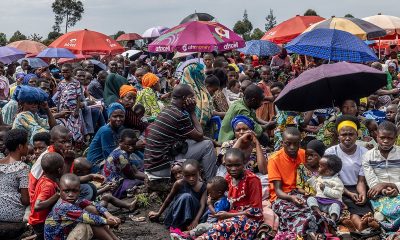
 NGO WORK1 day ago
NGO WORK1 day agoDiscover How Foreign Interests and Resource Extraction Continue to Drive Congo’s Crisis
-

 MEDIA FOR CHANGE NETWORK3 hours ago
MEDIA FOR CHANGE NETWORK3 hours agoUganda’s Army is on the spot for forcibly grabbing land for families in Pangero Chiefdom in Nebbi district.
-
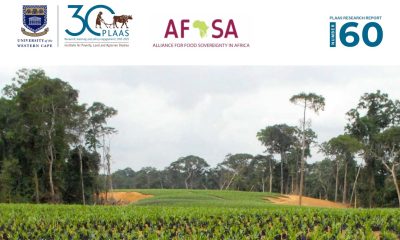
 NGO WORK6 hours ago
NGO WORK6 hours agoAfrica’s Land Is Not Empty: New Report Debunks the Myth of “Unused Land” and Calls for a Just Future for the Continent’s Farmland


